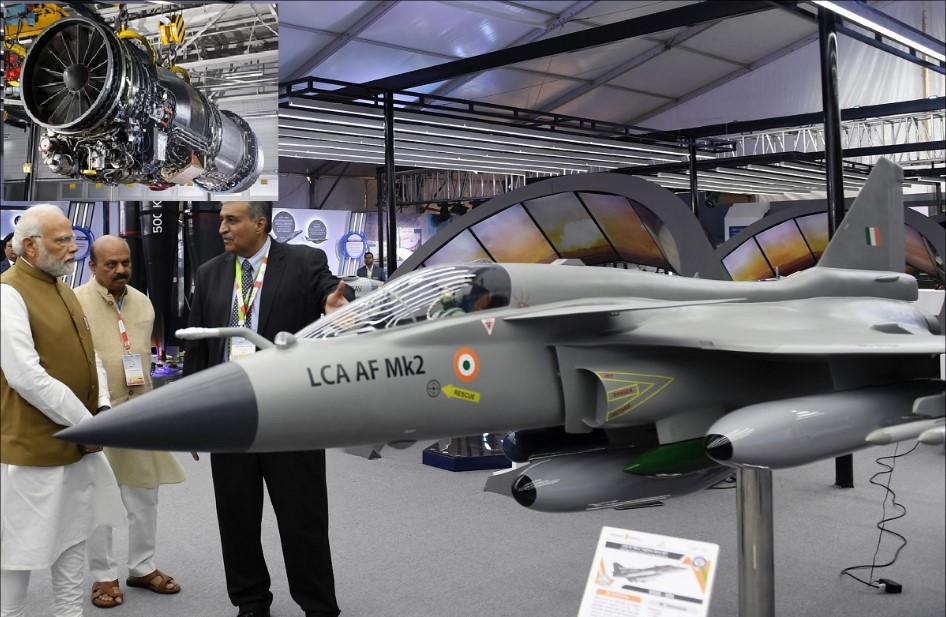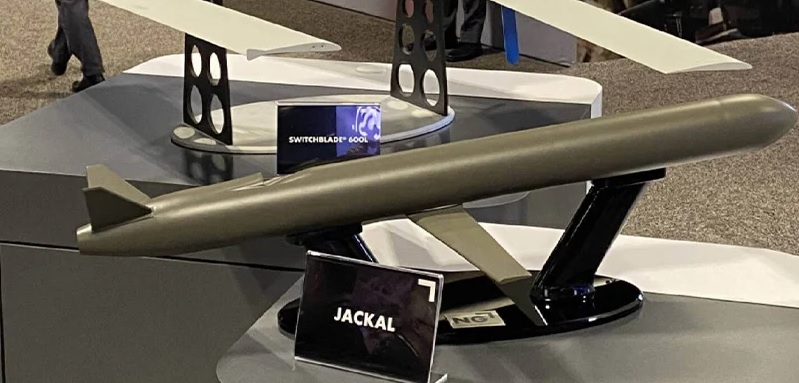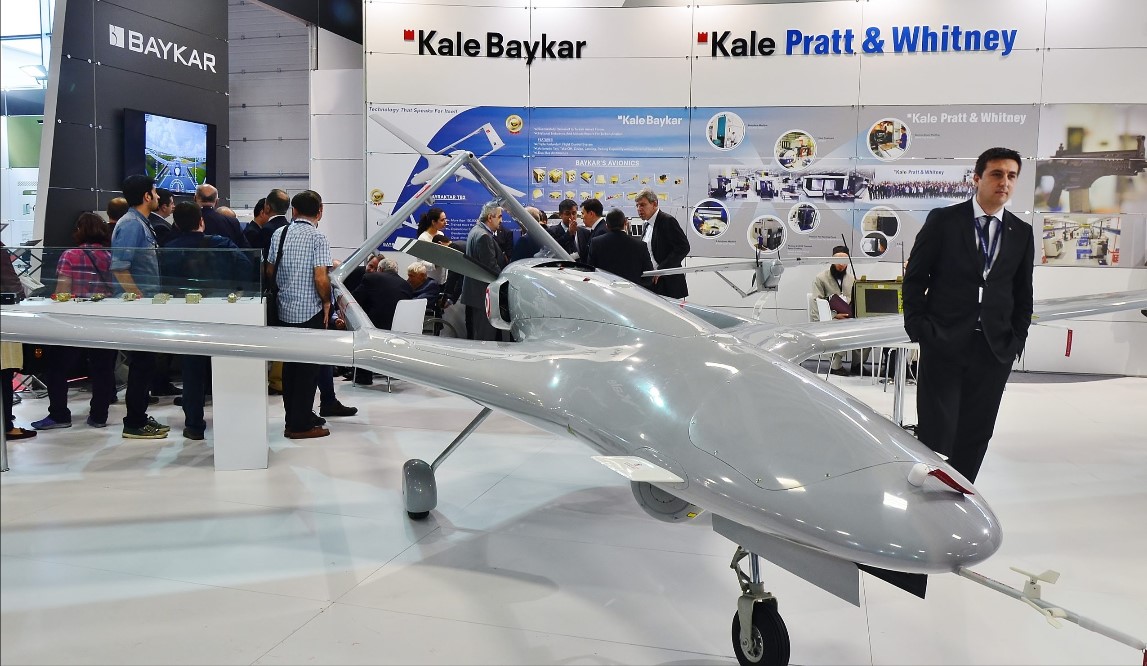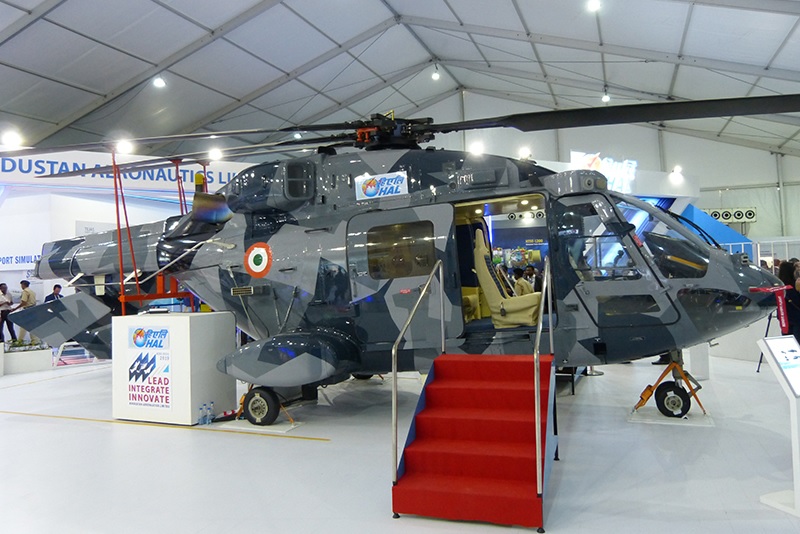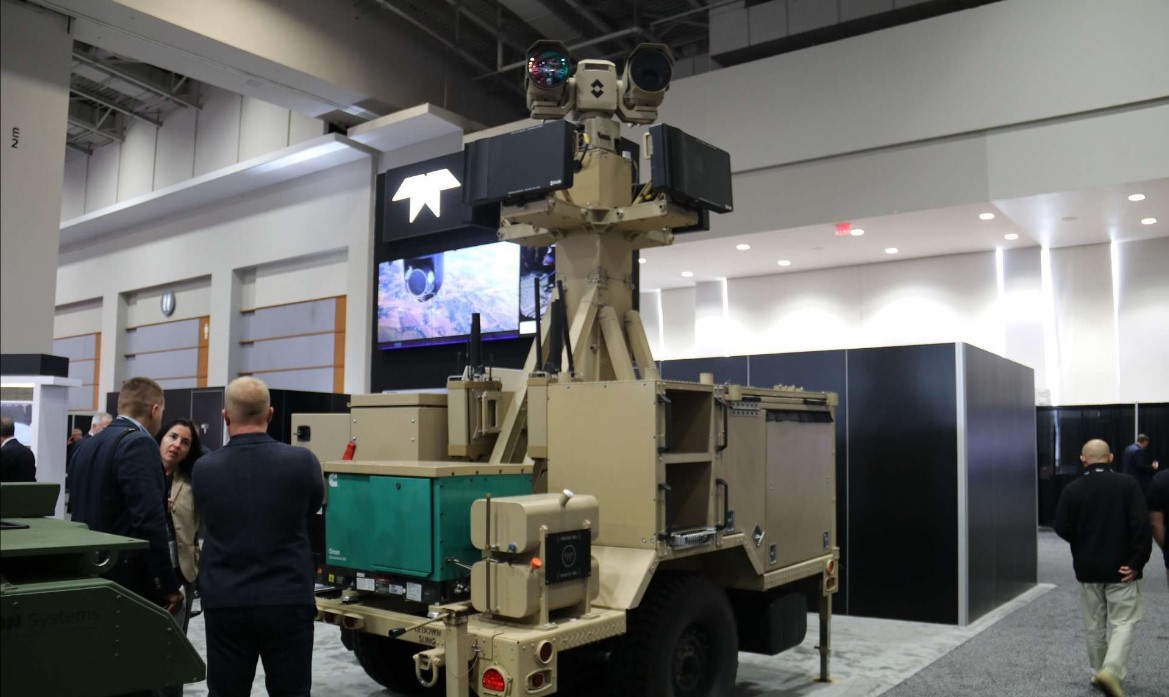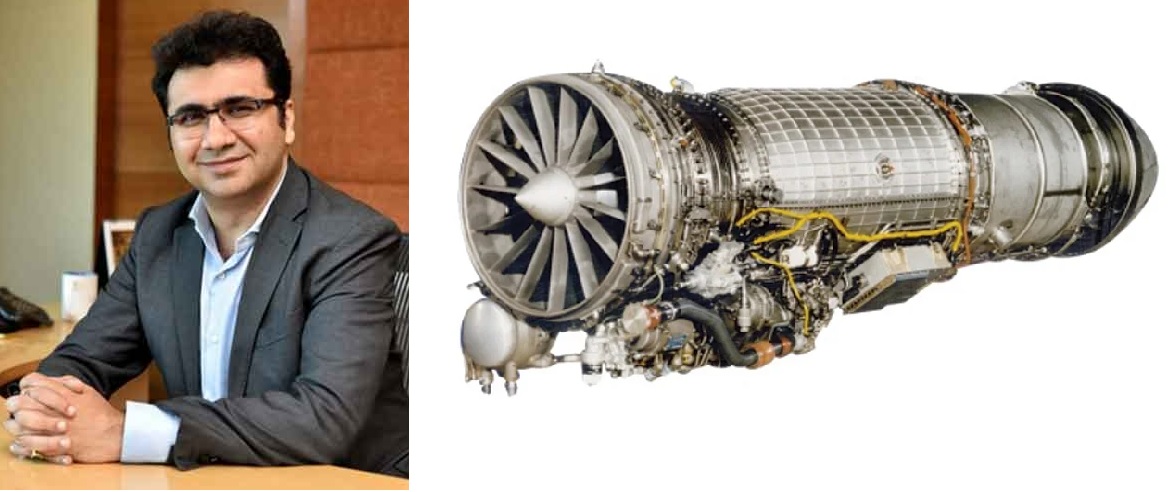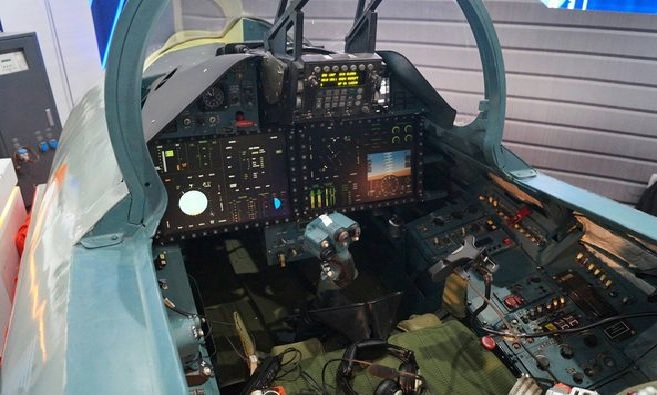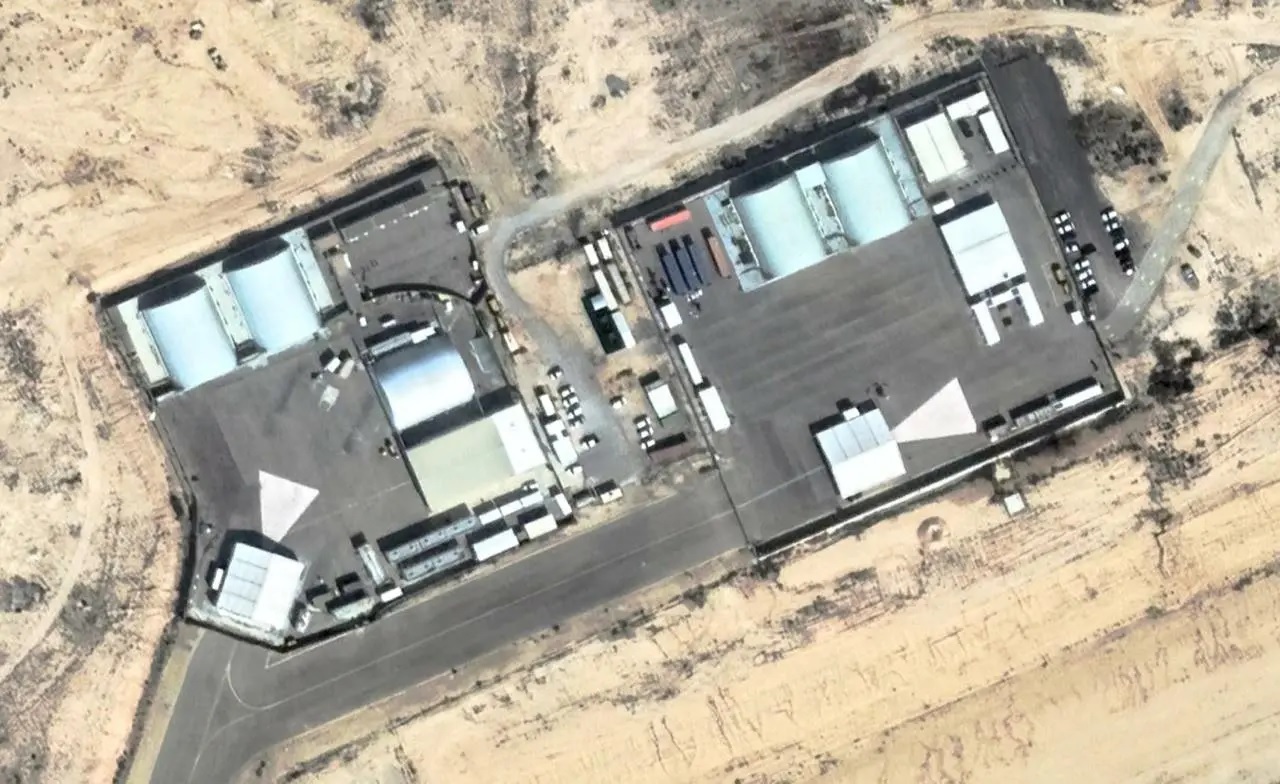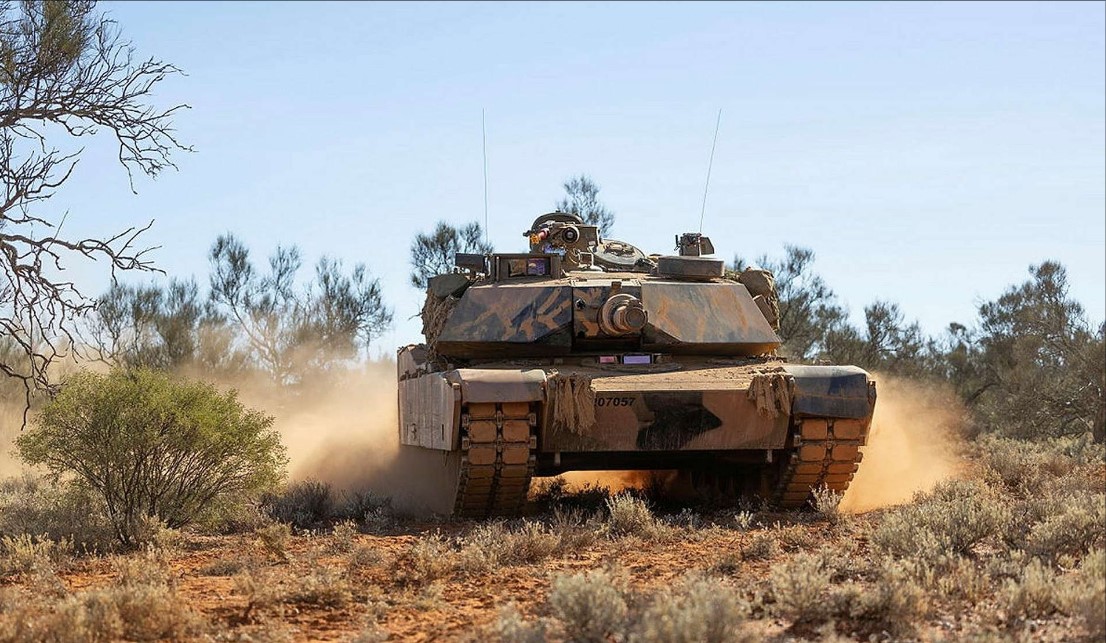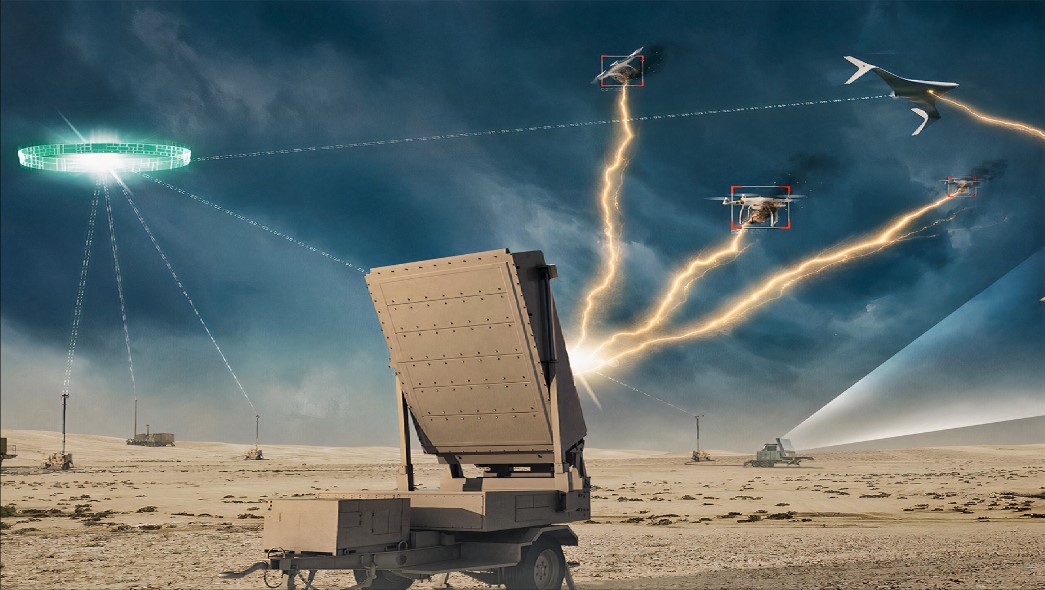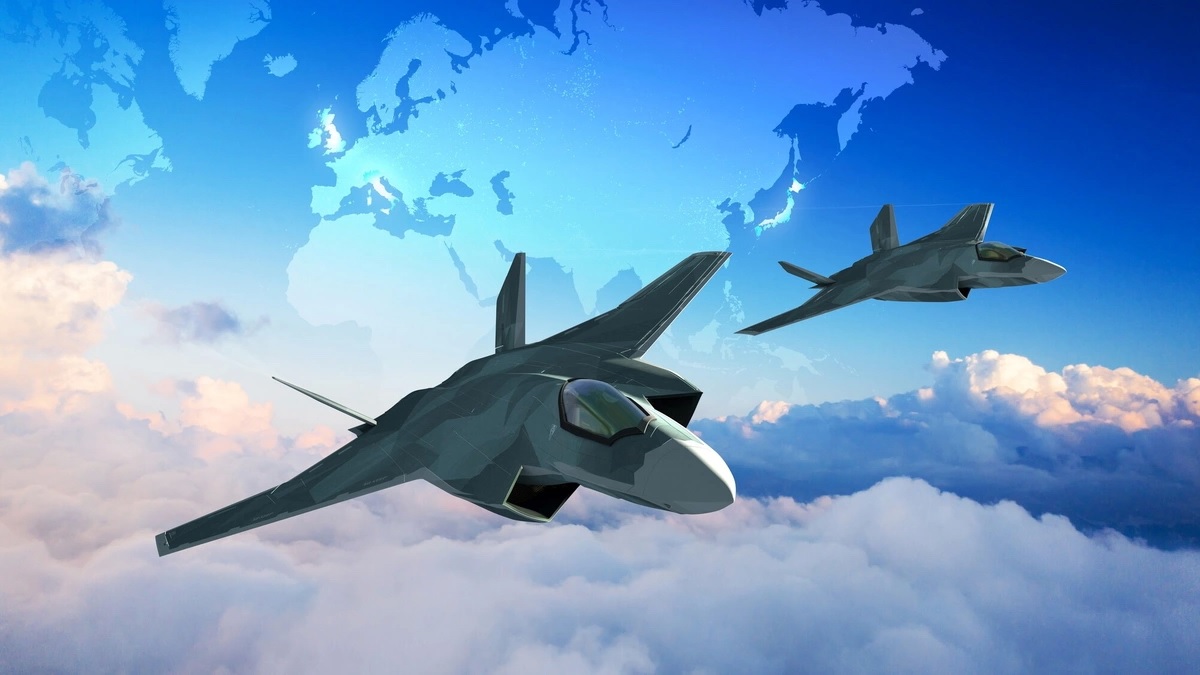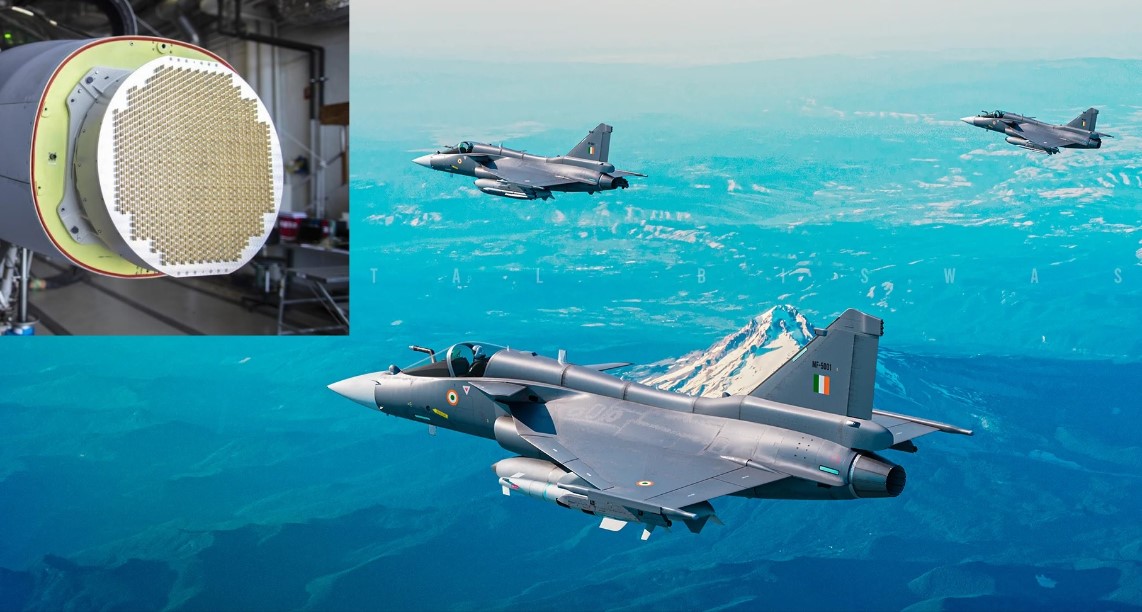World
True Anomaly, a rapidly emerging player in space technology, has joined forces with Firefly Aerospace to execute a series of critical orbital vehicle launch trials for the US Space Force under the Victus Haze program. The partnership underscores a pivotal leap in military space operations, designed to strengthen the United States' defensive posture in space by enhancing its capability to quickly launch spacecraft capable of deterring potential threats.Victus Haze is a specialized initiative by the US Space Force aimed at developing a tactical spacecraft capable of responding to threats in space with rapid countermeasures. The core of the program focuses on creating a spacecraft that can be launched with minimal notice, allowing for quick responses to various orbital scenarios, whether defensive or offensive. This mission holds significant strategic value, as the increasing militarization of space has become a critical aspect of global defense strategies.In this ambitious project, True Anomaly's proprietary orbital vehicle, called Jackal, will be launched aboard Firefly Aerospace’s Alpha rocket. The Jackal vehicle, designed for rendezvous and proximity operations, is an advanced spacecraft capable of maneuvering close to other objects in space, potentially enabling it to observe, inspect, or even disrupt adversarial satellites. This technology has drawn significant attention as it promises a tactical advantage in space-based conflict scenarios. The Jackal and Firefly Alpha team-up aims to prove the vehicle’s proficiency in carrying out such operations. The launch trials are scheduled to occur between 2025 and 2027.The Challenge of Speed and PrecisionOne of the most impressive aspects of this collaboration is the requirement for the launch to be executed within 24 hours of receiving the US Space Force’s green light. Once the signal is given, Firefly and True Anomaly must move rapidly: they will transport the Jackal vehicle to the launch pad, integrate it with the Alpha rocket, complete all necessary pre-launch processes, and launch the vehicle into space—all within a day.The demanding timeline for the Victus Haze mission underscores the increasing importance of rapid response capabilities in space defense. The ability to launch spacecraft at such short notice allows the US to react to emerging threats in space—whether from anti-satellite weaponry or other hostile actions—more effectively. Once in orbit, the Jackal will perform complex operations, maneuvering near another spacecraft launched by Rocket Lab as part of the same program. These rendezvous and proximity operations are crucial for evaluating Jackal’s capability to perform in real-world tactical scenarios.The launch is expected to take place from either Vandenberg Space Force Base in California or Cape Canaveral Space Force Station in Florida, two major hubs for US space operations.Partnership Backed by ExpertiseTrue Anomaly secured the primary Victus Haze mission contract in April 2024, marking a significant milestone for the company. The $30 million contract includes spacecraft development, launch preparation, and in-orbit operations. True Anomaly is already hard at work constructing the Jackal at its Denver manufacturing center. The company’s innovative approach has allowed it to stand out in the highly competitive space industry, with its technology promising to give the US Space Force a much-needed edge.Firefly Aerospace, on the other hand, brings extensive experience in responsive space launch logistics. The company previously completed a similar test mission under the US Space Force’s “Victus Nox” program from September 2023 to February 2024. That trial provided vital insights for the upcoming Victus Haze launches, fine-tuning the processes required for rapid spacecraft deployment.The Alpha rocket, which will be used for the Victus Haze mission, is Firefly’s medium-lift rocket designed for responsive space missions. Capable of launching payloads up to 1,000 kg to Low Earth Orbit (LEO), the Alpha rocket has proven to be a versatile and reliable option for both commercial and military missions. It combines a solid track record with the agility necessary for fast-response missions, making it a fitting choice for the Victus Haze program.Building 'Asymmetric Capabilities'As True Anomaly CEO Even Rogers emphasized, Victus Haze exemplifies how public-private partnerships can create groundbreaking capabilities. By leveraging True Anomaly’s cutting-edge manufacturing and Firefly’s rapid-launch technology, the US is positioning itself to maintain a decisive edge in space. These “asymmetric capabilities,” as Rogers called them, are designed to provide the US with a strategic advantage, allowing it to respond to threats faster and with more precision than ever before.Firefly’s role in expanding the US National Security Space enterprise is not limited to the Victus Haze mission. The company is poised to provide additional launch capacity, ensuring that the US is ready to deploy spacecraft quickly, both in Low Earth Orbit (LEO) and Medium Earth Orbit (MEO). This enhanced capability supports broader national security efforts and highlights the increasing importance of responsive space launch services.Looking ForwardThe partnership between True Anomaly and Firefly Aerospace marks a critical step in the evolution of space defense. With the US Space Force's focus on rapid and reliable spacecraft deployment, these trials are more than just test launches—they are shaping the future of how military operations will be conducted in space. The success of Victus Haze could set the stage for even more advanced capabilities, solidifying space as a critical domain in modern defense strategies.As the timeline for the Victus Haze trials approaches, both True Anomaly and Firefly are gearing up to demonstrate their ability to meet the US Space Force’s high-stakes demands. If successful, this collaboration could redefine the boundaries of what’s possible in space defense, providing the US with the tools it needs to maintain superiority in an increasingly contested domain.
Read More → Posted on 2024-10-21 15:49:30India
French aerospace giant Safran is positioning itself as a key player in India's ambitious defense projects, offering its 110kN engine as a potential power source for both the Advanced Medium Combat Aircraft (AMCA) and the Tejas Mk2. The announcement from Safran opens up new possibilities for India’s fighter jet landscape, particularly as the Indian Air Force (IAF) is actively considering the best engine options for its future fleet.Safran’s offer comes at a critical moment. India has been working towards localizing the production of the General Electric F-414 engine, which is currently planned to power the Tejas Mk2. However, the French manufacturer has proposed its own 110kN engine, which boasts greater power and flexibility. While the F-414 is already on the table, the potential integration of Safran's engine offers India a unique opportunity to rethink its approach, particularly for the Tejas Mk2.The Tejas Mk2, an upgraded version of the light combat aircraft (LCA) Tejas Mk1, is expected to enter production by 2029-30. This timeline coincides with the projected availability of Safran’s 110kN engine, which is expected to be production-ready by 2033-34. With the IAF planning to induct around 120 Tejas Mk2 jets by the late 2030s, Safran’s more powerful engine could provide a much-needed boost in performance for these aircraft.One of the key advantages of Safran’s 110kN engine is its increased thrust, which is crucial for air superiority in modern combat scenarios. The IAF’s operational requirements are evolving, and future conflicts are likely to demand greater speed, maneuverability, and endurance from its aircraft. Safran’s engine could offer all of this and more, giving the Tejas Mk2 an edge over its current configuration with the F-414.Another factor in favor of Safran’s offer is India’s long-term focus on indigenization. While there are already discussions about producing the F-414 engine locally, Safran’s proposal suggests that it could also be produced within India, aligning with the government’s “Make in India” defense initiative. This would not only reduce India’s dependency on foreign suppliers but could also bolster the country's aerospace manufacturing capabilities.Technically, the Safran engine would require thorough integration testing to ensure compatibility with the Tejas Mk2 platform. While both engines fall within the 100+ kN thrust class, Safran's engine offers a slight performance advantage, which could translate into better agility, higher payload capacity, and improved combat endurance. The French aerospace company has a longstanding relationship with India, including its involvement in providing engines for the Rafale jets that the IAF operates, which adds further credibility to their bid.Of course, the decision to shift from GE's F-414 to Safran's 110kN engine would not be without its challenges. A change of this magnitude would require re-evaluating the technical architecture of the Tejas Mk2, which could lead to adjustments in the aircraft’s development schedule. Additionally, geopolitical considerations and India’s strategic partnerships with both the U.S. and France will also come into play as decision-makers weigh the pros and cons of each option.Safran’s involvement in the AMCA program is seen as a positive development for India’s indigenous fighter jet capabilities. The AMCA is intended to be a fifth-generation stealth aircraft, and having a powerful, homegrown engine like Safran’s 110kN model could help India achieve true self-reliance in advanced fighter technologies. But beyond the AMCA, Safran's offer for the Tejas Mk2 demonstrates its adaptability and willingness to support India's defense ambitions on multiple fronts.As India continues to refine its plans for the Tejas Mk2 and the AMCA, Safran’s 110kN engine is emerging as a strong contender. With higher thrust levels, the possibility of local production, and a track record of working with India’s defense sector, Safran has presented an enticing alternative to the established F-414 engine. The next few years will be pivotal as India evaluates its options, but one thing is clear—Safran's engine could be a game-changer for both the AMCA and Tejas Mk2 programs, providing the IAF with superior aerial capabilities in the decades to come.
Read More → Posted on 2024-10-21 15:41:51World
Northrop Grumman has officially unveiled its new cutting-edge precision strike missile, dubbed the Jackal, marking a significant leap forward in multi-purpose munition technology. Designed in collaboration with Aerovironment, a defense firm known for the highly effective Switchblade loitering munitions, the Jackal brings together a unique combination of speed, endurance, precision, and versatility. This next-generation missile is not just another weapon but a powerful tool capable of a wide range of combat functions.What sets the Jackal apart is its flexibility in mission roles. Capable of carrying both lethal and nonlethal payloads, it is built to perform tasks such as electronic warfare and intelligence, surveillance, and reconnaissance (ISR) operations. This adaptability makes it an ideal weapon for modern combat scenarios where multiple threats require varied responses. Speed, Precision, and EnduranceThe Jackal boasts an impressive speed of 600 kilometers per hour (373 miles per hour), ensuring quick response times in high-pressure environments. However, it's not just about speed—endurance is also key. With a loitering time of 15 minutes, the Jackal can hover over a target area, conducting ISR missions to gather crucial information before launching a strike. This allows commanders to make informed decisions, reducing the chances of collateral damage.What makes this missile even more advanced is its autonomous capabilities. The Jackal can navigate via pre-set waypoints, detect and recognize targets automatically, and even operate in GPS-denied environments. These features are critical in modern warfare, where GPS jamming and sophisticated enemy countermeasures are common.Jackal’s Evolution From the Switchblade SeriesThe Jackal draws inspiration from Aerovironment’s successful Switchblade series, which is known for its loitering munitions like the Switchblade 300 and Switchblade 600. While the Switchblade 300 is designed for short-range strikes and the Switchblade 600 is specialized for anti-armor missions, the Jackal fills the gap between these systems. It features a much larger payload capacity of 10 pounds (4.5 kilograms), significantly surpassing its predecessors. With a range of 100 kilometers (62 miles), it can engage targets well beyond the 10-kilometer range of the Switchblade 300 and the 40-kilometer range of the Switchblade 600.This extended range and payload capacity make the Jackal more versatile in addressing evolving battlefield threats, especially those that the earlier Switchblade models might struggle to handle. The Jackal was first introduced as a concept at the Special Operations Forces Industry Conference (SOFIC) in Tampa, Florida, back in May 2022, where it was shown as a one-way strike drone that could be deployed from both land and air platforms.Pushing the Boundaries of ISR and Lethal StrikesIn modern warfare, the ability to seamlessly transition between ISR missions and launching lethal strikes can be the difference between success and failure. The Jackal, with its ability to loiter and gather data before striking, embodies this approach. Its turbojet-powered propulsion system ensures it can stay airborne long enough to serve as both an intelligence asset and a strike weapon.The missile's capability to operate in contested environments, especially where GPS signals are jammed, gives it a tactical edge. This feature alone makes it a valuable tool for special forces and conventional military units operating in areas where electronic warfare is in play. The Jackal’s automated target detection and recognition systems add another layer of precision, allowing it to identify and engage targets without direct human intervention, thus reducing the burden on operators and enabling faster reaction times.A Glimpse Into the Future of Precision MunitionsWith the unveiling of the Jackal, Northrop Grumman and Aerovironment are pushing the boundaries of what a precision strike weapon can accomplish. The missile represents the next step in the evolution of loitering munitions, designed to meet the needs of modern combat operations that demand flexibility, accuracy, and endurance.As threats evolve, so too must the tools we use to counter them. The Jackal’s multi-role capability—whether performing ISR missions, disrupting enemy communications through electronic warfare, or engaging in direct strikes—makes it a powerful addition to any military's arsenal.This missile is not just a new addition to the precision strike market; it’s a signal of where the future of warfare is headed, where machines are as capable of gathering intelligence as they are at delivering lethal payloads.In an age of ever-changing combat requirements, the Jackal’s combination of speed, precision, and versatility is likely to set the standard for the next generation of strike weapons.
Read More → Posted on 2024-10-21 15:33:03World
Turkey has taken a significant step in bolstering its defense relations with Albania by announcing a donation of a "significant number" of kamikaze drones. This decision, revealed by Albanian Prime Minister Edi Rama after a meeting with Turkish President Recep Tayyip Erdoğan, marks a notable advancement in the defense and humanitarian collaboration between the two nations. The move is not only symbolic of their growing partnership but also reinforces Albania’s military capabilities in a rapidly shifting geopolitical landscape.Prime Minister Rama was quick to emphasize that this donation is purely defensive, stating that it sends a strong message that "Albania is unhittable." However, he clarified that Albania has no intention to use these drones for offensive purposes. This assertion highlights that while the donation is a strategic upgrade for Albania, it is not meant as a provocation or threat to any neighboring countries.Although specific details about the type or number of drones remain under wraps, there is speculation regarding the inclusion of Turkey's renowned unmanned aerial systems (UAS). Among the leading contenders is the Bayraktar TB2, a combat drone that has gained international attention for its performance in various conflicts. The Bayraktar TB2, produced by Turkish defense company Baykar, boasts impressive specifications, including a flight endurance of 27 hours and the capability to carry out precision strikes alongside surveillance missions. Given Albania’s previous procurement of three Bayraktar TB2 drones, the possibility of more of these UAS being part of the donation is likely.Albania’s earlier acquisition of Bayraktar TB2s made it the second NATO member, after Poland, to add these Turkish drones to its arsenal. This not only strengthens Albania's defense posture but also deepens its defense ties with Turkey, a key NATO ally. The drones are expected to play a crucial role in enhancing Albania’s military readiness, particularly in light of the increasing tensions within the Balkan region. These drones, often referred to as "loitering munitions," can hover over an area before identifying and striking a target, making them effective in both reconnaissance and offensive roles.Turkey’s decision to donate these drones underscores the strategic importance it places on its relationship with Albania. As both countries work closely to address common security challenges, this military assistance signals Turkey’s commitment to supporting Albania’s defense modernization. This gesture also reflects Turkey’s broader ambitions to establish itself as a dominant player in the defense industry, with its drones now being utilized across multiple NATO members.The exact timeline for the delivery of these drones remains undisclosed, but their eventual integration into Albania’s defense system will likely enhance the operational effectiveness of the Albanian Armed Forces. As regional dynamics continue to evolve, Albania’s upgraded military capabilities, thanks to Turkish technology, could serve as a deterrent to potential threats while reaffirming its role as a key player in Balkan security.This move not only strengthens Albania’s defense but also symbolizes the deepening ties between the two nations, showcasing how defense cooperation can serve as a tool for regional stability. As Turkey continues to expand its influence through defense exports, its relationship with Albania is set to play an increasingly important role in shaping the security dynamics of the Balkans.
Read More → Posted on 2024-10-21 15:29:02India
India's push towards self-reliance in defense technology is set to take a significant leap with the development of a new Naval Utility Helicopter (NUH). This indigenous project, aimed at meeting the Indian Navy's operational needs, is well underway, with the first prototype currently in the construction phase. The helicopter’s maiden flight is anticipated by May 2025, marking an important milestone in India's journey toward modernizing its naval fleet.The NUH project, which operates under the umbrella of the Utility Helicopter Marine Program, is designed to address the Indian Navy's requirement for 111 multi-mission helicopters. These helicopters will be versatile enough to operate from the decks of warships and in challenging maritime environments. Their primary roles will include transporting personnel, delivering cargo, and conducting emergency evacuations, making them a vital asset for naval operations. The helicopter’s design will allow for deployment in adverse weather conditions, ensuring year-round functionality.At the heart of the project is Hindustan Aeronautics Ltd (HAL), India’s premier aerospace and defense company. HAL has been tasked with not only designing but also constructing and testing the prototype. Sources close to the project have confirmed that HAL is undertaking rigorous testing to ensure the systems are fully integrated and certified before the helicopter takes flight. This testing phase includes the use of a separate test helicopter to ensure all onboard systems, such as avionics, communication systems, and radar, function seamlessly.The new naval helicopter is based on HAL's successful Advanced Light Helicopter (ALH) design, but it comes with numerous modifications tailored to the needs of naval operations. The structural changes are so extensive that some officials have compared the project to the development of an entirely new helicopter. Enhancements include upgrades in structural integrity, improved corrosion resistance for operations in salty sea air, and the incorporation of foldable rotor blades to optimize storage aboard ships. Additionally, the helicopter will be equipped with modern anti-submarine warfare (ASW) capabilities, making it suitable for both search-and-rescue missions and combat roles.Originally, the Indian Navy had considered a partnership with an international helicopter manufacturer to bring the project to life, but the decision to entrust HAL with the task underscores India's growing confidence in its indigenous defense industry. By keeping the entire production process within the country, India ensures the helicopter meets its precise operational requirements while boosting domestic manufacturing capabilities.In terms of performance, the upcoming NUH is expected to have a maximum range of around 500 kilometers and a top speed of approximately 250 kilometers per hour. The helicopter will be equipped with advanced sensors and weapons systems, including torpedoes and depth charges, making it a formidable asset in anti-submarine operations. Its capability to land on small warships or frigates and operate efficiently in both shallow and deep waters sets it apart as a crucial component of India’s maritime defense strategy.The ambitious timeline set for the first flight by May 2025 reflects the program's momentum and the importance placed on enhancing naval capabilities. Once fully operational, the fleet of 111 helicopters will bolster the Navy’s ability to conduct a wide range of missions, from logistics support to maritime security and disaster relief operations.This helicopter program also symbolizes India’s ongoing commitment to reducing its dependency on foreign defense imports. By nurturing projects like the Naval Utility Helicopter, India is steadily building a more self-sufficient defense industry, showcasing not only technological prowess but also strategic foresight in securing its defense needs for the future.With the NUH project on track, India is not only meeting the current demands of its naval forces but also laying the groundwork for future advancements in defense aviation. The success of this program will not only serve the needs of the Indian Navy but also position India as a competitive player in the global helicopter market.
Read More → Posted on 2024-10-21 15:20:32World
Teledyne FLIR Defense, a division of Teledyne Technologies, has once again pushed the boundaries of military and civilian security with the introduction of its Cerberus XL C-UAS (Counter-Unmanned Aircraft System). Showcased at the prestigious Association of the U.S. Army (AUSA) exhibition in Washington, D.C., the Cerberus XL system is designed to revolutionize the way air domain monitoring and counter-drone operations are conducted.The rise of drone technology has introduced both opportunities and threats, especially in conflict zones, airports, and critical infrastructure areas. With drones becoming more sophisticated and accessible, the need for robust countermeasures is more critical than ever. Cerberus XL emerges as a front-runner in addressing these challenges with its state-of-the-art capabilities.Advanced Detection and TrackingThe Cerberus XL system is equipped with long-range thermal and visual imaging technologies, making it a formidable tool for tracking even the most elusive drone threats. These sensors, coupled with 3D radar and radio frequency (RF) detection systems, enable operators to detect, track, and identify drones with incredible precision. The system’s ability to pinpoint drone locations across a range of up to three kilometers ensures that it can handle aerial threats before they become an imminent danger.What makes the Cerberus XL particularly impressive is its AI-driven sensor technology. This artificial intelligence-enhanced system not only detects drones but also improves the accuracy of identifying them as hostile or benign. This feature is critical in distinguishing between potential threats and friendly aircraft, ensuring more effective, targeted responses.Full Kill Chain CapabilitiesOne of the standout features of the Cerberus XL is its ability to handle the entire counter-drone “kill chain.” This means that the system is not limited to merely identifying and tracking drones—it can also neutralize them. By integrating with third-party non-kinetic effectors, such as electronic jamming tools, Cerberus XL can disable drones before they pose a threat, without necessarily having to destroy them. This flexibility is crucial in environments where minimizing collateral damage is a priority.For scenarios that require a more forceful response, the system is also designed to integrate with kinetic solutions. These can range from directed energy weapons to traditional firearms, providing a broad spectrum of options for neutralizing drones based on the threat level.Multi-Domain FlexibilityAnother significant advantage of Cerberus XL is its modularity and ability to adapt to various environments. Whether deployed in air, ground, or maritime settings, the system is engineered for rapid deployment and operational efficiency, even in harsh conditions. This makes it suitable for a wide array of uses, from military operations to securing airports, borders, and seaports. The trailer-based, mobile platform ensures that Cerberus XL can be relocated quickly, offering unparalleled situational awareness across different domains.Global Impact and Battlefield SuccessThe Cerberus XL C-UAS has already demonstrated its capabilities on the battlefield. Last year, FLIR Defense partnered with Kongsberg Defence & Aerospace to deliver the system to Ukrainian forces, securing a $31 million contract. The system has since proven its effectiveness in active military engagements, showcasing its ability to operate reliably in high-pressure environments.In addition to its success in Ukraine, Cerberus XL is now available for global shipping. Teledyne FLIR Defense is marketing this platform alongside its ground surveillance variant, allowing for even greater flexibility in addressing security needs.The Future of Counter-Drone TechnologyDr. JihFen Lei, President of Teledyne FLIR Defense, emphasized the importance of the Cerberus XL platform in today’s security landscape. "Cerberus XL C-UAS is one of the most sophisticated counter-drone systems, offering a comprehensive solution that integrates with existing defense infrastructure," he said.With its battlefield-tested performance, multi-domain adaptability, and full kill-chain capabilities, the Cerberus XL C-UAS system represents the future of drone defense. As drones continue to evolve, systems like the Cerberus XL will be crucial in ensuring the safety of military personnel, civilian infrastructure, and global security at large.Teledyne FLIR Defense’s Cerberus XL C-UAS system stands out as a highly advanced and flexible solution for countering the growing threat posed by unmanned aerial systems. From its AI-driven sensors to its modular deployment options, the Cerberus XL offers comprehensive protection across a wide range of environments. As the demand for counter-drone technology grows, this platform is poised to become a key asset for both military and civilian users worldwide.
Read More → Posted on 2024-10-21 15:16:03India
GE Aerospace is set to embark on a significant milestone in India's defense sector by manufacturing its F414 jet engines locally, a move that signals a major leap toward India's goal of self-reliance in defense production. Vikram Rai, the Chief Executive of GE Aerospace South Asia, announced this development during his address at the NDTV World Summit, revealing that the production will commence at a Hindustan Aeronautics Limited (HAL) facility in Bangalore.This collaboration between GE Aerospace and HAL aims to produce engines for India’s advanced fighter jets, specifically the Tejas MkII. As part of this effort, HAL will oversee the assembly of 99 F414 engines, with the deal expected to be finalized by the end of 2024. The engines are critical to India’s defense plans, powering the next generation of Tejas jets, a crucial component of India's indigenous combat aircraft program.India has been on a determined path to reduce its reliance on foreign defense imports, and this partnership represents a significant stride in that direction. The collaboration with GE Aerospace will bring advanced engine technology directly into Indian manufacturing, creating a ripple effect across the country’s aerospace ecosystem. HAL and GE’s agreement marks a deeper integration of cutting-edge technology into the country’s industrial base, aligning with India’s "Make in India" initiative for defense production.The F414 Engine and Its SpecificationsThe F414 engine is a powerful piece of engineering, renowned for its high thrust and exceptional reliability. Developed by GE, it is part of a family of afterburning turbofan engines. The F414 produces a maximum thrust of approximately 22,000 pounds and is designed to power supersonic aircraft, making it an ideal choice for India’s Tejas MkII jets. These engines offer improved fuel efficiency, higher power-to-weight ratios, and advanced cooling technologies, allowing for superior performance during extended combat operations.The F414's durability and advanced safety systems also make it a key asset for military applications. The engine’s twin-spool, axial flow design ensures minimal maintenance requirements while offering enhanced thrust-to-weight performance, especially critical for the Tejas MkII’s air superiority role. This advanced jet engine is not only capable of boosting the Tejas MkII’s combat capabilities but is also expected to be a cornerstone in India's quest for creating a robust defense production base.A Timely Push for the Tejas MkIIIndia has long sought to develop its indigenous fighter jets under the Light Combat Aircraft (LCA) program, and the Tejas MkII is poised to be a game-changer in that endeavor. HAL has already received 12 F414 engines for the pre-production prototypes of the Tejas MkII, which will undergo extensive testing to validate the performance and integration of the F414 engine with the aircraft. These tests will ensure that the engine performs under the rigorous conditions required by modern fighter jets before it is fully adopted for large-scale production.The Tejas MkII, powered by the F414 engines, is expected to have enhanced capabilities over its predecessor, including greater range, payload capacity, and advanced avionics. With production slated to begin in 2028-29, the MkII version will mark a significant upgrade for the Indian Air Force's fleet.A Vision for Defense ManufacturingGE Aerospace’s decision to manufacture the F414 engines in India reflects the growing confidence of global defense firms in the country’s manufacturing capabilities. The timeline for the project is ambitious, with engine production expected to start within the next three years, and the first deliveries projected by late 2027 or early 2028. This endeavor is also expected to provide a significant boost to India's defense exports, aligning with the government's long-term vision of making India a global defense manufacturing hub.As India strengthens its defense posture, the local production of advanced jet engines like the F414 will not only reduce its dependency on foreign suppliers but also elevate its status in the global defense industry. By bringing this high-tech manufacturing capability to Indian soil, the country is reinforcing its position as a key player in modern defense technologies.In sum, GE Aerospace’s collaboration with HAL to produce F414 jet engines represents more than just a manufacturing agreement—it is a vital step toward building India’s aerospace and defense industries and a major advancement for the Tejas fighter program.
Read More → Posted on 2024-10-21 15:05:24World
The US Army's watercraft fleet, once a critical element in military operations and logistics, has reached a new low in terms of readiness. A report from the Government Accountability Office (GAO) revealed that fewer than 40% of the Army’s vessels are capable of performing missions in 2024. This is a significant shortfall compared to the Army's target of maintaining a 90% mission-capable fleet. The GAO's findings paint a concerning picture of the Army's ability to respond quickly and effectively to global military needs, especially in regions like the Indo-Pacific, where tensions continue to escalate.The US Army operates a fleet of 70 watercraft designed for transporting personnel, vehicles, and equipment in open water and coastal regions. These vessels are vital for military operations in remote areas where traditional road and port infrastructure may not be available. The fleet includes various types of ships such as landing craft, logistical support vessels, and other transport ships capable of maneuvering in complex and austere environments.### A Declining FleetThe steady decline in fleet readiness is alarming. In 2021, about 70% of the fleet was mission-capable, a number that dropped to just over 60% in 2022. By 2023, that figure plunged to under 50%, and now, in 2024, fewer than 40% of the vessels are deemed ready for active duty. One vessel has been out of service for more than five years, underscoring the depth of the problem.Maintenance issues have been a longstanding challenge. The GAO report highlighted that many of these vessels require extensive repairs, and delays in maintenance work have contributed significantly to the deteriorating readiness. Parts shortages, aging equipment, and the complexity of maintaining such a specialized fleet have compounded the issue, leaving the Army struggling to get these vital ships back into service.The GAO also stressed the operational importance of these vessels. The Army’s watercraft provide critical logistical support in regions with limited access to traditional infrastructure, making them essential for rapid deployment and sustained military operations. As readiness continues to fall, the Army's ability to carry out its missions in these areas is severely compromised.A Ripple Effect on Training and OperationsThe decline in watercraft readiness isn't just a matter of fleet size or technical capability. It also affects the training of Army personnel assigned to these vessels. Low mission-capable rates mean that fewer vessels are available for training exercises, which are essential for ensuring that crews are prepared for real-world missions. The inability to conduct sufficient training further weakens the Army's operational capabilities.This situation could have broader implications, especially as the US military looks to increase its presence and preparedness in strategic areas like the Indo-Pacific. The GAO report warns that without a significant improvement in fleet readiness, the Army may not be able to meet both its immediate and long-term mission requirements.Solutions and RecommendationsTo address these concerns, the GAO made several recommendations to the Army. One of the primary suggestions is the development of a mitigation plan to fill the gaps in the fleet’s capability and capacity. This plan would involve a more strategic approach to maintenance scheduling, prioritizing resources, and considering alternative options to support military operations in key regions.The GAO also advised the Army to evaluate the full costs and benefits of different strategies to enhance fleet readiness. This includes weighing whether it might be more effective to replace aging vessels, invest in new technologies, or outsource some of the logistical support operations to third parties.Perhaps the most critical recommendation is the creation of an integrated strategy to tackle the ongoing maintenance problems. Such a strategy would help the Army better identify, analyze, and resolve the issues that have plagued the fleet for years. By improving coordination between different departments, ensuring proper oversight, and streamlining repair processes, the Army could potentially reverse the trend and get its watercraft fleet back to a more acceptable readiness level.The Road AheadAs the US Army faces increasingly complex global threats, the readiness of its watercraft fleet is more important than ever. While the GAO report has shed light on the severity of the problem, the path to improvement will require a concerted effort from Army leadership and Congress. The stakes are high, particularly in regions like the Indo-Pacific, where access to remote areas and the ability to project military power over water are critical for maintaining US interests.In the coming years, the Army will need to find solutions to restore its fleet to a level of readiness that allows it to meet global challenges. Whether through new investments, better maintenance practices, or a complete overhaul of the fleet, the time to act is now.
Read More → Posted on 2024-10-21 15:01:11India
France has officially called on India to impose tighter export controls on key avionics components used in Su-30 fighter jets, expressing concerns that these critical systems could end up in Russia through a third-party route, particularly Kazakhstan. The French government is alarmed by reports indicating that Kazakhstan-based companies are aiding the repair and maintenance of Russian Su-30SM fighter jets using French-made avionics technology, potentially supplied by India.At the heart of the issue lies the advanced avionics systems used in the Su-30SM variant, a modernized version of the Su-30 fighter jet flown by the Indian Air Force (IAF). India, with the world's largest fleet of Su-30MKI aircraft, plays a significant role in maintaining, upgrading, and supplying spare parts for these jets. Notably, these jets incorporate avionics systems produced by the French defence giant, Thales.Thales’ avionics include cutting-edge multifunction displays, heads-up displays (HUDs), and sophisticated navigation systems. These components are indispensable to the Su-30’s functionality and combat effectiveness. Their high precision and technological complexity are exactly what France fears might make their way into Russian hands via an indirect route, thus violating international sanctions imposed on Russia since its invasion of Ukraine.The concern stems from an investigation conducted by InformNapalm, an international intelligence community. The investigation found that the Kazakh company ARC Group has been servicing Russian Su-30SM fighter jets using French-made avionics despite existing sanctions. This revelation has raised alarms in Paris, which fears that these components are circumventing the sanctions imposed on Moscow.India, having deep defense ties with both Russia and France, now finds itself in a delicate position. Its expertise in maintaining Su-30MKI aircraft, along with its established supply chain for spares—including French avionics—puts it in the global spotlight. Indian defense firms have become significant players in the Su-30 ecosystem, not only meeting domestic needs but also supplying other operators of the Su-30 family of aircraft.The French government's request could put additional pressure on India to monitor and potentially restrict the export of these sensitive avionics systems to ensure that they do not inadvertently aid Russian military capabilities. Though India has yet to issue an official response, it is a complex diplomatic issue. The country must carefully balance its longstanding strategic partnerships with Russia—its primary defense supplier—and its growing ties with Western nations, including France.This situation also underscores the intricacies of modern defense trade. The global supply chain for military equipment is interconnected, and enforcing sanctions in such a complex landscape becomes increasingly difficult. France’s plea to India reflects a growing awareness of how dual-use technologies, particularly those produced by companies like Thales, can be exploited in unintended ways.If India agrees to France's request, it may lead to increased scrutiny of Indian defense companies involved in the Su-30 supply chain. However, India’s decision will have broader implications for its strategic relationships and defense policies, especially as it continues to navigate a shifting global geopolitical landscape.For now, the spotlight remains on how India will manage the potential breach of sanctions and the flow of these critical technologies. As the world's largest operator of Su-30s, India's stance on this issue will be closely watched by both the West and Russia.
Read More → Posted on 2024-10-21 14:57:13World
Recently surfaced intelligence documents have shed light on a highly classified aspect of Israel’s military capabilities: a long-range unmanned surveillance drone program capable of carrying out covert operations throughout the Middle East. These revelations offer a glimpse into Israel's secretive defense apparatus, underscoring the extent of its intelligence-gathering efforts, especially concerning Iran.The documents, which emerged on Telegram in mid-October, detail Israeli drone operations conducted between October 15 and 16, including preparations for potential military strikes against Iran. These long-range unmanned aerial vehicles (UAVs) are described as having advanced stealth capabilities, allowing them to perform extensive intelligence, surveillance, and reconnaissance (ISR) missions over sensitive areas, including Iran's nuclear facilities. The drones’ existence had been kept out of the public eye until now, indicating the level of secrecy surrounding the program.### A Closer Look at the Leaked InformationThe documents reportedly reveal that the Israeli Air Force (IAF) used the drones for covert surveillance operations during the specified dates. Analysis conducted by the U.S. National Geospatial-Intelligence Agency (NGA) provided supporting evidence, with imagery confirming that UAVs were being prepared for missions at Ramon Airbase in southern Israel. The equipment and personnel seen at the base suggested ongoing operations, with the drones capable of conducting sustained ISR missions over significant distances.This disclosure offers new insight into Israel's aerial intelligence capabilities, particularly concerning Iran. The advanced drones give Israel the ability to maintain a discreet, high-altitude surveillance presence over areas of interest. Given the sensitive nature of Iran's nuclear program and its support for regional militant groups, such ISR capabilities grant Israel an invaluable strategic edge.Potential Drone SpecificationsWhile specific details of the drone’s design and capabilities remain undisclosed, some extrapolations can be made based on existing UAV technology within Israel's known arsenal. The drones likely employ a combination of advanced materials and radar-absorbing coatings to reduce their radar cross-section, enhancing their stealth capabilities. These UAVs may also feature long-endurance flight characteristics, allowing them to stay airborne for extended periods, potentially exceeding 24 hours. Given the emphasis on covert operations, it is plausible that the drones carry a variety of sophisticated sensors, including electro-optical and infrared (EO/IR) systems for high-resolution imagery, synthetic aperture radar (SAR) for all-weather reconnaissance, and signals intelligence (SIGINT) equipment for intercepting communications.The drones are also expected to incorporate advanced navigation systems to operate in contested environments where GPS signals may be jammed. Autonomous flight capabilities, powered by artificial intelligence (AI), could assist in navigating complex routes to avoid detection. The platform may even support modular payloads, enabling it to switch between various intelligence-gathering tasks based on mission requirements.Strategic Implications and Regional TensionsThe timing of the leak is significant, occurring amidst a period of heightened tensions between Israel and Iran. Over the years, the two countries have engaged in a shadow conflict that includes cyber warfare, targeted assassinations, and proxy battles across the region. Israel has repeatedly expressed its determination to prevent Iran from acquiring nuclear weapons, a stance that has led to ongoing clandestine military actions aimed at undermining Tehran’s capabilities. The presence of long-range UAVs capable of covertly monitoring sensitive sites in Iran, such as nuclear enrichment facilities, aligns with Israel's strategic priorities.Furthermore, the documents highlight Israel's broader intelligence capabilities beyond surveillance over Iran. The drones offer Israel a significant advantage in gathering real-time intelligence across the Middle East, monitoring adversaries’ military movements, and providing actionable data to decision-makers. The ability to conduct ISR missions deep into adversarial territory without detection is a critical asset for Israel, particularly in preparing for potential military contingencies.The Fallout from the LeakThe leak of such classified information poses several risks. It exposes details about Israel’s clandestine activities, potentially compromising future operations. The authenticity of the documents has been confirmed by a source familiar with their contents, while U.S. officials are actively investigating the origins of the leak. The breach not only endangers operational security but could also escalate existing regional tensions, especially if it is perceived as a precursor to military action against Iran.The revelations also bring to light questions about intelligence-sharing and cybersecurity, especially as the leak implicates both Israeli and American intelligence agencies. Israel's drone capabilities, although long speculated upon, had remained largely obscured from public view. The new disclosures provide adversaries with an understanding of the range, endurance, and potential missions of these UAVs, which may lead to increased counter-surveillance measures.The exposure of Israel's secretive long-range surveillance drone program marks a significant moment in understanding the nation’s military intelligence capabilities. While details on the UAVs remain limited, the leaked documents reveal a sophisticated and well-developed surveillance apparatus, enhancing Israel's ability to monitor and respond to regional threats. These drones not only extend Israel's reach but also highlight the nation’s readiness to act amid the ongoing confrontation with Iran over its nuclear ambitions. As the investigation into the source of the leak continues, the broader implications for regional security and intelligence operations are likely to unfold in the coming months.
Read More → Posted on 2024-10-20 16:02:10India
In a quiet village nestled 100 kilometers from Delhi, the family of Vikash Yadav is reeling from shocking allegations. The 39-year-old former Indian official, once associated with the Central Reserve Police Force (CRPF), now finds himself at the center of an international controversy. The U.S. Department of Justice has accused Yadav of orchestrating a plot to kill Gurpatwant Singh Pannun, a prominent figure in the Khalistani separatist movement. But for those who know him, the accusations seem far-fetched and surreal.Yadav's cousin, Avinash Yadav, has dismissed the allegations, calling them false. He relayed his disbelief during a conversation with Reuters, standing in the modest confines of the family home in Pranpura, a village in Haryana. "For us, he is still a deputy commandant with the CRPF," Avinash insisted, referencing Yadav's career with the paramilitary force that began in 2009. He added that his cousin had been trained as a paratrooper and had never hinted at any involvement in intelligence operations, let alone in a murder conspiracy.The indictment, unsealed by U.S. authorities, paints a different picture. It accuses Yadav of being a former operative for India's Research and Analysis Wing (RAW), the country's foreign intelligence agency, and of directing another Indian citizen, Nikhil Gupta, to hire a hitman for $15,000 to carry out the assassination of Pannun. The alleged murder plot, however, was never executed. Pannun, a lawyer and the leader of the pro-Khalistan group Sikhs for Justice (SFJ), has been a vocal advocate for a separate Sikh homeland, a cause that India views as a serious national security threat. The Indian government has long opposed SFJ's activities, banning the organization in 2019 under anti-terror laws and labeling Pannun as a terrorist. Yet, to date, the Indian authorities have refrained from commenting on the specifics of Yadav’s case, only acknowledging that they are investigating the allegations and clarifying that Yadav is no longer in government service.Despite the U.S. claims, Yadav’s relatives and villagers struggle to reconcile the man they knew with the character portrayed in the indictment. His mother, Sudesh Yadav, still visibly shaken, expressed disbelief. "What can I say? I do not know whether the U.S. government is telling the truth or not," she said, sitting in the single-story family house. To her, Vikash was a dutiful son who dedicated his life to serving the country, and the idea of him being involved in a murder plot seemed impossible. His family pointed out their humble lifestyle as evidence, questioning where the supposed large sums of money would have come from. "Can you see any Audis or Mercedes lined up outside this house?" Avinash asked, gesturing towards the modest surroundings.The Yadav family is not new to military service. Vikash's late father had served in the Indian Border Security Force, and his brother is a police officer in Haryana. Growing up, Vikash had shown a passion for sports and books, even achieving recognition as a national-level marksman. His quiet disposition and disciplined life made the allegations all the more shocking for those who knew him. The timing of the case has raised eyebrows in India, coming amidst heightened tensions over Sikh separatism. The issue flared up again after the killing of another pro-Khalistan figure, Hardeep Singh Nijjar, in Canada. Canada's Prime Minister, Justin Trudeau, accused India of being involved in the assassination, a claim that has further strained diplomatic relations. Now, with Yadav’s case unfolding, it appears that accusations of extraterritorial operations and covert killings are not limited to Canadian soil.The U.S. authorities have not disclosed the full details of how they came to suspect Yadav's involvement or what evidence links him directly to the alleged plot. Meanwhile, American media reports suggest that Yadav remains in India, prompting speculation about a possible extradition request from Washington. For now, Indian officials have chosen to maintain a cautious silence, with no word on Yadav’s current whereabouts or his ties to any intelligence services.Yadav’s relatives are urging the Indian government to come forward and clarify the situation. "We want the Indian government to support us; they should inform us what has happened," Avinash stated, expressing concern that the family was being kept in the dark. "Otherwise, where will we go?" Their appeal underscores a broader worry that paramilitary officers and other security personnel could be left vulnerable if the government is perceived as abandoning one of its own.The broader context also cannot be ignored. The rise of the Khalistan movement as a contentious geopolitical issue has drawn in multiple governments, with varying stakes in how it unfolds. While India's stance against separatism is well-known, the implication of its citizens in criminal activities abroad poses a serious challenge to its diplomatic standing. The allegations against Yadav, if substantiated, could point to a disturbing escalation in tactics used to quell dissent, while the murky details surrounding the case also risk becoming fodder for anti-India propaganda.As the controversy unfolds, Yadav’s story remains shrouded in ambiguity, with his family caught in a whirlwind of suspicion and uncertainty. To them, he is still the loyal officer who wore the uniform with pride. Whether or not he was involved in something darker, only time and a transparent investigation may reveal. For now, the echoes of doubt and disbelief continue to resonate from the small village of Pranpura, where the family waits for clarity and answers in a situation that feels increasingly out of their control.
Read More → Posted on 2024-10-20 15:57:49World
In a groundbreaking experiment, Chinese researchers have put nuclear-proof data link communications equipment through a rigorous test designed to simulate the impact of a nuclear attack. The test, which exceeded existing military standards, highlights China's advanced engineering capabilities and its efforts to ensure the survival of critical military communications systems in the event of a high-altitude nuclear strike.Amid growing global tensions and the ever-present fear of nuclear conflict, this experiment has taken on new significance. Earlier this year, the UN warned that the risk of nuclear war had reached its highest level in decades. The five permanent members of the UN Security Council – the United States, China, France, Russia, and Britain – have all recently tested intercontinental ballistic missiles, raising alarm. In this context, the Chinese test offers a glimpse into the military’s focus on nuclear preparedness.At the heart of the experiment lies the concept of a **High-Altitude Electromagnetic Pulse** (HEMP), a devastating phenomenon that occurs when a nuclear bomb is detonated in the stratosphere. Although such an explosion doesn’t physically harm people or buildings on the ground, it sends out high-energy electromagnetic pulses capable of disabling electronic systems across vast distances. In modern warfare, where communication is crucial, the loss of electronic equipment could spell disaster.China’s engineers from the **China Electronics Technology Group Corporation (CETC)**, the country's leading supplier of electronic warfare equipment for the People's Liberation Army (PLA), designed the test to be as realistic and demanding as possible. While military standards usually require data link equipment to withstand an electromagnetic pulse field strength of 50 kilovolts per metre, the Chinese team raised the stakes by increasing this threshold by 60 percent – subjecting the equipment to 80 kilovolts per metre.Surprisingly, the results were promising. Despite the intense electromagnetic field, the equipment emerged unscathed, with only a brief interruption in functionality. This performance is remarkable, considering that the strength of the electromagnetic pulse in the test far surpassed what is required by both American and Chinese military standards.The CETC team used advanced modifications to harden the equipment against the destructive power of HEMP. One of the key changes involved redesigning antennas, which are highly vulnerable during an electromagnetic pulse. Normally, antennas are built to receive weak signals, but during a nuclear-induced pulse, they can generate a massive surge of current that could destroy connected systems. To counter this, the engineers reworked the antennas to divert excess current into the ground, preventing damage even when the current reached fifty times its predicted intensity.Another major concern for the engineers was the possibility of “back-door intrusion.” High-energy pulses could infiltrate data link equipment through ventilation ducts, cables, or tiny gaps in equipment casings. This risk prompted the team to innovate further. They applied new materials and special welding techniques to seal off every possible entry point for electromagnetic energy, making the equipment even more resistant to the extreme conditions simulated during the test.A military representative from the PLA Air Force's equipment department observed the test, though the exact date and many details of the experiment remain classified. What’s clear, however, is that the successful execution of this experiment underlines China's commitment to ensuring the survival of its communication systems in a potential nuclear conflict. It also underscores the country's **"no first use"** nuclear policy, meaning that China's nuclear arsenal is designed for retaliatory purposes only. In such a scenario, its military communications systems must remain functional to coordinate a response after the first strike.The research results were published in the peer-reviewed Chinese journal *Wireless Communication Technology* in September, where project lead Li Zhirui and his team described the physics behind a nuclear explosion’s electromagnetic pulse. Gamma rays from the explosion collide with air molecules, generating high-energy electrons that spread outward, posing a threat to all electronic devices in their path. Understanding and defending against this phenomenon, the researchers noted, is vital for maintaining the integrity of China’s electronic warfare infrastructure.This test is not just about protecting data link hardware but about demonstrating China's engineering prowess. The use of cutting-edge materials, enhanced designs, and innovative processes like advanced welding techniques reflects the country's growing strength in military technology. The fact that this equipment was able to endure such harsh testing conditions speaks volumes about the robustness of China’s defense systems.As nuclear tensions remain high globally, the ability to safeguard vital communications infrastructure has become a central focus for nations seeking to ensure their strategic resilience. China's successful experiment may signal its readiness to withstand some of the worst-case scenarios in modern warfare.China’s bold approach to testing its nuclear-proof communications equipment highlights the country's determination to enhance the survivability of its military systems under extreme conditions. The experiment’s success reflects both China’s advanced capabilities and the global climate of heightened nuclear tensions. With communications technology forming the backbone of modern defense, such tests are crucial to ensuring military preparedness in an increasingly uncertain world.
Read More → Posted on 2024-10-20 15:54:51World
China is setting its sights on a groundbreaking new frontier—exploring the depths of the Arctic Ocean with a crewed submersible. This bold mission, spearheaded by China’s State Shipbuilding Corporation's 704th Research Institute, is part of the nation's broader push to expand its scientific and strategic footprint in the Arctic region. As China gears up to be only the second country after Russia to send a manned vessel to the Arctic seabed, the mission promises to unlock new scientific knowledge and open up avenues for future resource exploration.At the heart of this mission is the submersible that will be deployed from the newly built polar research vessel, **Tan Suo San Hao** (Explorer Three). This vessel has been carefully designed to tackle the unique challenges of Arctic exploration. The submersible will be launched through a special hole in the hull, allowing it to descend into the icy depths where few have ventured before. This feature ensures that the submersible can bypass the limitations posed by ice floes, which restrict the movement of surface ships. Once below the ice, the submersible will enter an environment that presents extreme technical challenges, but also immense opportunities for scientific discovery.Advanced Chinese Technology for Arctic ExplorationWhat makes this mission particularly significant is the fact that China is relying on its own technology—something it previously had to source from other countries. The developers have already tested the submersible in various conditions, including underwater docking and operations in freezing temperatures, which are critical for the Arctic’s harsh environment. Although full specifications of the submersible remain undisclosed, China has highlighted that the system is versatile, with potential applications beyond Arctic research. The technology could be adapted for deep-sea oil and gas exploration, seabed pipeline construction, and even search and rescue operations, showcasing China’s growing technological prowess in deep-sea engineering.To support the submersible, the Tan Suo San Hao has been outfitted with advanced equipment designed specifically for deep-sea missions. This includes a 10,000-meter winch system capable of lowering the submersible to the seabed and a deployment and recovery system that ensures safe operations in the unpredictable polar seas. All of this reflects China’s commitment to building a comprehensive, self-sufficient polar exploration fleet that can operate year-round, a feat previously achievable only by countries like Russia and the United States.China’s Growing Polar Fleet and Strategic AmbitionsThis mission is part of China’s larger strategy to strengthen its presence in the Arctic, a region it refers to as a "near-Arctic" power. Over the past few years, China has rapidly expanded its polar exploration capabilities. It has built multiple icebreakers, including the **Xue Long 2**, its first domestically produced vessel capable of navigating through thick ice. The newest icebreaker, the **Jidi**, embarked on its maiden voyage to the Arctic in August 2023, underscoring China’s growing ambition to maintain a strong, year-round presence in the region. The submersible mission also highlights the geopolitical stakes in the Arctic. As melting ice opens new shipping routes and exposes untapped natural resources, countries like China, Russia, and the United States are increasingly vying for influence. The U.S. has expressed concern over China’s growing Arctic presence and has started boosting its own shipbuilding capabilities to keep up. Earlier this year, the U.S., along with Canada and Finland, launched a joint project to develop new polar vessels, including icebreakers, as a counter to China’s expanding fleet.A New Chapter in Polar ExplorationChina’s planned Arctic seabed mission is a testament to the country's growing technological and scientific capabilities. By building advanced submersibles and icebreakers, China is positioning itself as a key player in polar exploration—a region that holds untold scientific treasures and strategic resources. With the Tan Suo San Hao expected to begin sea trials next year, the world will be watching closely as China inches closer to its goal of reaching the bottom of the Arctic Ocean, paving the way for future discoveries and resource exploitation in one of the world’s most remote and fragile environments.This mission is more than just a technological feat; it symbolizes China’s broader ambitions to exert influence in global polar affairs, securing a future where it plays a central role in the exploration and utilization of the Arctic’s vast, untapped potential.
Read More → Posted on 2024-10-20 15:49:31World
In a significant move to strengthen Ukraine’s defense capabilities, the Australian government has pledged to donate most of its M1A1 Abrams tanks to Kyiv. This decision is part of a broader defense package valued at AUD 245 million, designed to bolster the Ukrainian Armed Forces, particularly their armored brigades, which have sustained heavy losses during the ongoing conflict with Russia.Australia's contribution includes 49 M1A1 Abrams tanks, a highly regarded model in modern warfare. The Abrams tanks have been a core component of the Australian Army since 2007 when they introduced the M1A1 AIM (Abrams Integrated Management) variant. These tanks share many features with the M1A1SA tanks already in Ukraine’s arsenal, making them a familiar platform for Ukrainian forces.The M1A1 Abrams is renowned for its combination of firepower, mobility, and protection. Equipped with a 120mm smoothbore cannon, the tank is capable of engaging enemy armored vehicles with devastating precision. Its sophisticated fire control system ensures high accuracy, even on the move, while its advanced composite armor offers superior protection against both kinetic energy rounds and explosive munitions. Powered by a 1,500-horsepower gas turbine engine, the M1A1 Abrams is also one of the fastest main battle tanks in the world, capable of reaching speeds up to 67 km/h on roads and 40 km/h off-road.Despite its formidable reputation, the Abrams tanks in Ukrainian service have faced significant challenges on the battlefield. Of the 31 M1A1SA tanks previously delivered by the U.S., 16 have been destroyed during intense combat operations. Ukrainian military tactics, which often involve the use of tanks in exposed positions, have made them vulnerable to a variety of threats, including anti-tank guided missiles, drones, and artillery.Australia’s donation comes as the country prepares to phase out its M1A1 Abrams tanks and replace them with the more advanced M1A2 SEPv3 (System Enhancement Package) models, purchased from the United States in 2022. These newer tanks incorporate upgraded armor, improved electronics, and advanced communications systems, providing enhanced situational awareness on the battlefield. The first deliveries of the M1A2 SEPv3 have already begun, but the full integration into the Australian Army is still underway. Until then, Australia will retain 10 M1A1 tanks as a contingency force while the transition to the new models is completed.The decision to donate these tanks reflects Australia’s commitment to supporting Ukraine in its defense against Russian aggression. By providing these tanks, Australia is not only helping Ukraine replenish its armored capabilities but also sending a clear message of solidarity in the face of mounting Russian offensives.The addition of these tanks will significantly enhance Ukraine’s ability to engage in armored warfare, giving its military a much-needed boost in firepower and mobility. This contribution could prove crucial as Ukraine continues its efforts to reclaim territory and resist Russian advances.
Read More → Posted on 2024-10-20 15:41:59India
A recent report has revealed a troubling development between the United States and India. According to The Sunday Guardian, U.S. intelligence agencies, including the FBI and CIA, had reportedly been preparing to arrest a former official from India’s premier intelligence agency, the Research and Analysis Wing (R&AW). The arrest was to occur during a private family trip to the U.S., but the operation was suddenly abandoned after Indian intelligence caught wind of the plan, leading to the cancellation of the trip.Although the report does not officially confirm the identity of the former R&AW official, speculations strongly point toward Samant Goel, the agency’s chief until 2023. Goel, who has had a long and distinguished career in India’s intelligence apparatus, is known for his instrumental role in counterterrorism operations, particularly against separatist movements such as the Khalistan issue. His alleged connection to a controversial plot targeting Khalistani terrorist facilitator Gurpatwant Singh Pannun has intensified speculation around the U.S. move.Pannun, a notorious figure in India, is the head of Sikhs for Justice (SFJ), an organization banned in India but operating relatively freely in other countries, including the U.S. He is one of India’s most-wanted individuals for his role in spreading pro-Khalistan sentiment and advocating for violent separatism. While India considers Pannun a terrorist, the U.S. has provided him with a platform under its legal protections, which has often been a source of contention between the two nations. It appears that Goel’s name became tied to an alleged assassination plot against Pannun, prompting the U.S. to consider taking drastic measures by arresting the former intelligence officer.The alleged operation to arrest Goel echoes past diplomatic tensions between India and the U.S., most notably the 2013 arrest of Indian diplomat Devyani Khobragade in New York. Khobragade’s arrest on charges of visa fraud and mistreatment of a domestic worker caused a major diplomatic row, with India accusing the U.S. of disrespecting diplomatic immunity and humiliating her. The fallout saw India reducing U.S. diplomatic privileges and a wave of public anger. Had the U.S. gone ahead with the arrest of someone like Goel, the implications could have been even more severe, potentially leading to a much deeper diplomatic rupture.Tensions over Khalistani activism have been escalating in recent years, particularly with the rise of online propaganda and the growing influence of the diaspora. India has repeatedly expressed its frustration with countries like the U.S., Canada, and the U.K. for not doing enough to clamp down on these separatist elements. To India, these movements are not just about political activism but are tied to a legacy of violence and terrorism that has long plagued the country. From New Delhi's perspective, any attempt by the U.S. to act against someone like Goel, who has been central to India's fight against such elements, would be seen as a betrayal.The reported tip-off that led to the scrapping of Goel’s travel plans is yet another example of how sensitive intelligence operations can influence international relations. India’s intelligence agencies are known to work closely with counterparts in the U.S., but this incident suggests there is also mistrust simmering beneath the surface. The cancellation of the planned arrest saved what could have been an extremely volatile situation, but it also raises questions about how the two countries perceive and handle the threats posed by Khalistani separatism.This incident comes at a time when U.S.-India relations have otherwise been strengthening, particularly with defense and strategic partnerships growing. However, incidents like these remind both nations that there are still unresolved tensions, particularly when it comes to issues of national security and intelligence operations.The growing activism of Khalistani sympathizers in the West remains a thorny issue for India, and this latest episode involving Samant Goel suggests that tensions may continue to simmer beneath the surface. While the U.S. and India may be aligned on many global issues, cases like this show how intelligence operations and the differing priorities of national interests can bring even close partners to the brink of diplomatic crises. In the coming months, it will be important to see how both nations handle such sensitive matters, particularly as both sides will need to balance their interests while avoiding the kind of fallout that was seen in the Khobragade case. If not carefully managed, this issue could complicate U.S.-India relations at a time when both countries are looking to strengthen their strategic and security ties.
Read More → Posted on 2024-10-20 15:39:04World
BAE Systems has completed the delivery of 400 2-Color Advanced Warning Systems (2CAWS) to the U.S. Army as part of the Limited Interim Missile Warning System (LIMWS) program. This delivery marks a significant leap in the protection of U.S. Army helicopters, providing them with the latest in missile detection technology to safeguard both aviators and airborne soldiers from evolving missile threats.The 2CAWS system is a next-generation aircraft survivability solution that builds upon the legacy of BAE Systems' Common Missile Warning System (CMWS). CMWS has already proven itself on thousands of U.S. Army and international aircraft, clocking millions of flight hours. With 2CAWS, BAE Systems has taken missile detection to a new level, introducing state-of-the-art features that ensure enhanced survivability for rotary-wing aircraft in increasingly complex and contested environments.Key Features of 2CAWSAt the core of 2CAWS is its multi-spectral sensor suite, which provides advanced detection capabilities. Unlike older systems that rely on single-spectrum sensors, 2CAWS operates across multiple spectrums, significantly improving its ability to detect threats that employ more advanced camouflage or countermeasures. This multi-spectral approach allows the system to quickly identify missile launches, even in dense environments where traditional systems might struggle.Additionally, 2CAWS boasts a high-speed digital backbone, enabling rapid data processing. This is vital when dealing with the split-second nature of missile engagements. In combination with machine learning algorithms, the system can identify threats with incredible accuracy, minimizing false alarms and ensuring that real threats are dealt with swiftly.What truly sets 2CAWS apart is its integration with laser-based and expendable countermeasures. Once a missile threat is detected, 2CAWS immediately cues these countermeasures, deploying them in real-time to divert or destroy the incoming threat. This capability provides U.S. Army pilots with the confidence to operate in highly contested areas, knowing that their aircraft has a robust, responsive defense system in place.Battle-Proven Performance2CAWS-equipped aircraft have already logged thousands of operational flight hours. The system's effectiveness has been demonstrated in real-world combat scenarios, where it successfully detected and neutralized sophisticated missile threats. Its reliability and performance under extreme conditions are a testament to BAE Systems' dedication to protecting military personnel.Dave Harrold, vice president and general manager of Countermeasure & Electromagnetic Attack Solutions at BAE Systems, emphasized the importance of this system, stating, "Protecting U.S. Army helicopters is core to our mission. We’ve worked closely with Army Aviation to provide cutting-edge capabilities that protect crews from evolving threats, provide adversarial overmatch, and enable warfighters to execute missions in contested battlespace."A Legacy of InnovationBAE Systems has a long history of developing and delivering cutting-edge defense systems. With 2CAWS, they have once again demonstrated their ability to innovate and adapt to the changing nature of warfare. The system's development under the LIMWS Quick Reaction Capability (QRC) contract highlights BAE's expertise in delivering critical solutions under tight deadlines. The company's deep knowledge of size, weight, and power constraints for rotary-wing aircraft ensures that 2CAWS is optimized for the rigorous conditions these aircraft face.As threats continue to evolve, BAE Systems is already looking toward the future. The company is actively working on the next generation of threat detection and countermeasure systems, ensuring that the U.S. Army remains equipped with the best technology available.In summary, the delivery of 400 2CAWS systems represents a significant milestone in the ongoing effort to protect U.S. Army helicopters and their crews. With its advanced threat detection capabilities, rapid response time, and proven performance, 2CAWS is set to play a vital role in ensuring aircrew survivability for years to come.
Read More → Posted on 2024-10-20 15:32:47India
The Indian Army is taking bold strides in preparing for future warfare with its latest military exercise, "Swavlamban Shakti." Taking place at the Babina Field Firing Ranges near Jhansi, the exercise, which began recently, is set to continue until October 22nd. Organized by the Army's Southern Command and led by Lieutenant General Prit Pal Singh, General Officer Commanding the Sudarshan Chakra Corps, this exercise showcases the Army's commitment to integrating next-gen technologies into its combat operations."Swavlamban Shakti" isn’t just about troops and traditional weaponry. It's a glimpse into the future of warfare, where drones, robotics, and advanced communication systems are expected to dominate the battlefield. Over 1,800 personnel are participating in the exercise, along with 210 armored vehicles and 50 specialist vehicles. This is complemented by a significant aviation presence, making the exercise a comprehensive test of the Army's offensive capabilities in a technology-driven world.What sets "Swavlamban Shakti" apart is its focus on showcasing and evaluating more than 50 cutting-edge technologies from over 40 Indian defence industry partners. These include contributions from Defence Research and Development Organisation (DRDO) labs and emerging defence startups. This initiative is closely tied to India's broader "Aatmanirbhar Bharat" (self-reliant India) vision, which emphasizes the importance of domestic defence production.A wide array of advanced technologies are being tested, such as swarm drones and kamikaze drones. Swarm drones, capable of overwhelming enemy defences by attacking in large numbers, represent a crucial asset in modern warfare, where the ability to neutralize air threats swiftly is vital. Kamikaze drones, designed to crash into and destroy enemy targets, offer a highly tactical, low-cost option for precision strikes.Logistic swarm drones are also part of the mix, designed to provide essential supplies to troops in difficult terrains. These unmanned aerial systems, alongside robotic mules and all-terrain vehicles (ATVs), can play a transformative role in transporting goods and equipment to soldiers in remote or hazardous areas, reducing reliance on human intervention and improving the speed of logistics.Another key area of exploration is drone jamming and anti-drone systems. With the rising threat of drone warfare, handheld drone jammers and other counter-drone measures are crucial in safeguarding troops from surveillance or attacks by hostile UAVs. The exercise is also evaluating software-defined radio-based mobile ad-hoc networks (MANETs), which offer secure and resilient communication channels vital for modern battlefields where communication can often be disrupted.Other technologies under review include indigenously developed long-endurance UAVs, light armored multipurpose vehicles (LAMVs), laser-based communication systems, and directed energy weapons (DEWs). The use of laser communication offers several advantages, such as resistance to jamming and interception, ensuring critical information flows without disruption during combat. Meanwhile, DEWs, which utilize lasers to incapacitate enemy electronics or missiles, could redefine how the Army handles airborne threats."Swavlamban Shakti" aims to identify the most promising of these technologies for future development and procurement. By actively collaborating with Indian defence companies, the Army is fostering innovation and self-reliance, a crucial step in reducing dependency on foreign military imports. This reflects a shift towards a more robust and independent defence ecosystem, where indigenous solutions meet the nation's military needs.The exercise will culminate on October 22nd with the "Southern Star Drone Mela and Static Equipment Display." This event promises to be a unique showcase of drone and anti-drone technologies, offering a platform for young entrepreneurs and MSMEs to demonstrate their capabilities. Set against the backdrop of a simulated modern battlefield environment, this showcase highlights the growing role of startups and small businesses in the defence sector."Swavlamban Shakti" is not just an exercise in military readiness; it is a glimpse into the future. By integrating advanced technologies and promoting collaboration with domestic defence manufacturers, the Indian Army is positioning itself for the challenges of modern warfare, ensuring that it remains a formidable force in an ever-evolving global landscape.
Read More → Posted on 2024-10-20 15:29:05World
Japan, the UK, and Italy have joined forces to fast-track the development of a next-generation fighter jet under the Global Combat Air Program (GCAP). This project, which aims to deploy the new fighter by 2035, is driven by the need to replace Japan's aging F-2 jets and the UK’s Tempest, while addressing growing security threats posed by China, Russia, and North Korea. The collaboration represents a significant shift in the global defense landscape, signaling closer ties among these key nations in their bid to develop cutting-edge military capabilities.The latest development in this ambitious project came after Japan's Defense Minister, Gen Nakatani, met with his British and Italian counterparts, John Healey and Guido Crosetto, in Naples on the sidelines of the Group of Seven defense ministers' summit. The trio announced the creation of the GCAP International Government Organization (GIGO), which will oversee the project. GIGO, to be headquartered in the UK and led by a Japanese official, is tasked with ensuring smooth collaboration between governments and the defense industries involved in producing the jet. This new joint organization aims to accelerate progress, with a target to finalize key contracts by 2025.Driving Forces Behind the Joint Fighter JetThe joint fighter project was agreed upon in 2022, marking a historical defense partnership between the three nations. The driving force behind this collaboration is the shared recognition of the need to modernize air capabilities amidst increasing geopolitical tensions. Japan is particularly focused on bolstering its defenses in the face of China’s military expansion in the Asia-Pacific region, as well as the persistent threats from North Korea’s missile tests. Meanwhile, the UK and Italy are equally motivated by the need to enhance their defense capabilities, particularly in light of the ongoing war in Ukraine and the need to counter potential Russian aggression.At the heart of this next-generation fighter is a shared vision: to build a stealthy, highly advanced combat aircraft that will not only dominate the skies but also integrate seamlessly with modern systems like drones, advanced radar, and electronic warfare capabilities. The fighter is expected to employ cutting-edge AI technologies and offer enhanced survivability against modern anti-aircraft threats.Collaboration Among Industry GiantsSeveral leading defense companies are already hard at work on the project. Japan's Mitsubishi Heavy Industries (MHI), the UK's BAE Systems, and Italy's Leonardo have all signed on to contribute their expertise. MHI, a powerhouse in Japanese defense, recently displayed a model of the future jet at a Tokyo aerospace exhibit, signaling the start of the joint development process. According to Akira Sugimoto, MHI’s senior representative for GCAP, this project will allow Japanese companies to bring their strengths to the table and foster the growth of Japan's domestic defense industry.For Japan, this initiative also marks a significant turning point in its defense policy. Historically bound by strict arms export regulations, Japan has recently relaxed these rules to allow for greater international cooperation. The new fighter jet will be one of the first major exports resulting from this policy shift. In addition to developing a world-class fighter jet, Japan is looking to improve its overall defense manufacturing capabilities and boost the economic stability of its military-industrial base.Technological Specifications of the Future FighterWhile full technical details remain classified, early reports suggest that the new fighter will feature stealth technology designed to reduce radar cross-sections, making it harder to detect. The jet will be built with supercruise capability, allowing it to sustain supersonic speeds without afterburners. This feature not only improves the jet's performance but also reduces its heat signature, making it more challenging for enemies to track.The fighter is also expected to be equipped with advanced sensors and data fusion systems, providing pilots with real-time, comprehensive battlefield awareness. Integration with unmanned aerial systems (drones) is another key feature, allowing the fighter to control a swarm of drones in combat scenarios, significantly enhancing its versatility and reach. The jet will likely carry a variety of advanced weapons, including beyond-visual-range air-to-air missiles and precision-guided munitions, ensuring that it remains highly effective in both offensive and defensive roles.Strengthening Global Defense AlliancesThe GCAP initiative is not just about building a superior aircraft; it is a clear symbol of growing military cooperation between Japan, the UK, and Italy. For Japan, this marks a critical step in bolstering its defense alliances beyond its traditional partnerships with the U.S. As threats from China and North Korea increase, Japan sees the GCAP program as a way to fortify its military readiness while expanding its influence in global defense.In contrast, the UK views the project as a natural progression of its Tempest program, which aims to develop a next-generation fighter that will replace its aging Typhoon jets. Italy, too, sees this collaboration as crucial for maintaining its position as a leader in European defense technology.Together, the three nations are paving the way for a new era of air superiority that will not only secure their respective national defenses but also set new standards for international cooperation in defense technology development. As the fighter progresses from design to production, all eyes will be on how the GCAP will redefine the landscape of global air defense.By 2035, the skies could look very different, with the combined technological prowess of Japan, the UK, and Italy taking flight in a brand-new generation of fighters.
Read More → Posted on 2024-10-20 15:22:23India
India’s defense landscape is on the brink of a major technological breakthrough with the introduction of the Tejas MkII fighter jet. This indigenous light combat aircraft will be the first Indian fighter to incorporate a Gallium Nitride (GaN)-based Active Electronically Scanned Array (AESA) radar, known as the Uttam Fire Control Radar (FCR). The integration of this cutting-edge radar marks a monumental shift for India’s military aviation, pushing the boundaries of homegrown defense capabilities and affirming the nation’s commitment to self-reliance.What makes this development particularly significant is the choice of GaN over the more commonly used Gallium Arsenide (GaAs) in radar systems. GaN has emerged as a game-changer in the semiconductor world due to its superior material properties. GaN components are more efficient, able to handle higher power levels and operate at higher frequencies, which directly enhances the radar’s performance. This results in a radar that is not only more compact and lightweight but also far more effective in tracking and detecting threats in real-time.The Uttam AESA radar, leveraging GaN technology, promises to give the Tejas MkII a formidable advantage in combat scenarios. It significantly improves the aircraft's situational awareness by offering greater detection range and accuracy. This is crucial when tracking multiple targets at once, even in environments filled with clutter or electronic countermeasures, where traditional radar systems might struggle. In aerial warfare, this could mean the difference between evading a threat or engaging an enemy in time.In addition to enhanced performance, GaN-based radars have another key advantage—they consume less power. This lower power consumption has a direct impact on the aircraft's operational endurance. With the Uttam radar, the Tejas MkII will be able to stay airborne longer, crucial for extended missions over hostile territory or operations that require prolonged patrols. The efficiency of the radar system thus enhances not only combat capability but also logistical flexibility, making the aircraft an even more valuable asset in the Indian Air Force (IAF).The Tejas MkII itself is a larger and more powerful iteration of the original Tejas MkI, equipped with more advanced avionics, a stronger engine, and a broader range of weapons systems. It is designed to fill the gap between lightweight fighters and heavier platforms like the Su-30MKI. The integration of the Uttam AESA radar will elevate its role even further, making it a lethal force multiplier in both defensive and offensive operations.India’s push to develop the Uttam AESA radar locally is a testament to the country's growing defense manufacturing capabilities. Developed by the Defence Research and Development Organisation (DRDO), the radar has been designed to meet the specific needs of the IAF, tailored to the unique operational challenges faced by Indian forces. It is also a significant step in reducing dependence on foreign technology, aligning with India’s larger “Make in India” initiative aimed at fostering indigenous defense production.The Tejas MkII’s introduction with the GaN-based Uttam radar will likely have ripple effects beyond just India’s air force. The country’s defense exports stand to benefit as well, with the Tejas platform becoming an increasingly attractive option for international buyers seeking an affordable yet technologically advanced fighter. The radar's cutting-edge design and GaN foundation make it a standout feature, positioning the Tejas MkII as a serious contender in the global arms market.In conclusion, the Tejas MkII, equipped with the GaN-based Uttam AESA radar, represents a new era in India’s aerospace capabilities. Its superior detection and tracking performance, coupled with increased operational endurance, make it a formidable platform in modern warfare. As the first Indian fighter to pioneer this technology, the Tejas MkII not only strengthens the Indian Air Force but also solidifies India’s position as a rising force in global defense innovation.
Read More → Posted on 2024-10-20 15:16:23India
In a significant move aimed at boosting India's defence capabilities, the Government of India has recently approved a series of high-value military acquisitions worth approximately ₹14,500 crore. This includes the procurement of Future-Ready Combat Vehicles (FRCVs) for the Army and the construction of seven stealth frigates under Project 17B for the Navy. These decisions, overseen by the Defence Acquisition Council (DAC), underscore India's commitment to modernizing its armed forces in response to potential threats from its two prominent neighbors, China and Pakistan.The need for these upgrades has become increasingly urgent as the Indian military grapples with aging equipment, much of it dating back to the Soviet era, and a reduced troop count. The strategic landscape for India is shaped by the possibility of a two-front conflict, necessitating advanced technologies and firepower to maintain combat readiness.1. Rafale Marine Jets: Strengthening Naval AviationAs part of its naval modernization efforts, India plans to acquire 26 Rafale Marine fighter jets from France’s Dassault Aviation. These jets, which include both single-seat and two-seat variants, will be stationed on the Indian Navy’s INS Vikrant, the country's first domestically built aircraft carrier. The Rafale Marine jets will replace the aging MiG-29Ks that have faced numerous operational issues, including accidents. The deal, worth around $6 billion, is expected to finalize by the end of 2024, with deliveries beginning in 2026. The advanced jets will significantly boost the Indian Navy’s maritime strike capabilities and enhance security in the Indian Ocean region.2. Predator Drones: Expanding India's Surveillance and Strike CapabilitiesAnother notable acquisition is the deal for 31 MQ-9B Predator drones from the United States. These high-altitude, long-endurance drones, valued at $3.3 billion, will be distributed across the Navy, Army, and Air Force. Equipped with advanced surveillance systems and precision strike weapons such as Hellfire missiles, these drones will greatly enhance India’s ability to conduct long-range reconnaissance and targeted strikes. This acquisition marks a significant leap in unmanned aerial capabilities, particularly crucial for monitoring contested areas like the Line of Actual Control (LAC) with China.3. Future-Ready Combat Vehicles: Revolutionizing Army’s FirepowerThe Indian Army’s FRCV program is another key element in the modernization drive. The initiative, which seeks to replace the aging T-72 tanks, aims to enhance the Army’s mobility and firepower in the event of conventional warfare. The Army plans to procure around 1,770 new-generation tanks, costing approximately ₹60,000 crore, that will be equipped with cutting-edge technology, including a 120mm+ main gun, AI-powered fire control systems, and battlefield management technology. These tanks will also feature advanced protection systems, making them formidable against modern threats.4. Stealth Frigates: Enhancing Maritime DefenceIndia’s maritime capabilities are set to receive a substantial boost with the Project 17B stealth frigates. The Navy plans to build seven to eight of these advanced warships, which will feature cutting-edge stealth technology, minimizing their radar visibility. These frigates will be equipped with indigenous weapon systems, including BrahMos and Nirbhay cruise missiles, ensuring India’s dominance in the Indian Ocean. The estimated budget for the Project 17B frigates is around ₹70,000 crore, with construction divided between Mazagon Dock Shipbuilders and Garden Reach Shipbuilders.5. Indigenous Advancements: Towards a Self-Reliant MilitaryThe government has placed a strong emphasis on indigenous defence production, with a special focus on modernizing the military through domestic technology. 2024 has been declared the "Year of Technology Absorption" for the Indian Army, reflecting the force’s commitment to integrating homegrown technology into its operations. The Army has successfully inducted M777 ultra-light howitzers and Chinook helicopters, enhancing both its firepower and mobility along key borders, especially in the challenging terrains of Arunachal Pradesh.6. New Missile Testing Range: Advancing Missile CapabilitiesFurthering India’s missile capabilities, the government has approved a new missile testing range in Nagayalanka, Andhra Pradesh. The range, strategically located near the Krishna River, will allow for the extensive testing of surface-to-air and anti-tank missiles. This facility will support India's indigenous missile programs developed by the Defence Research and Development Organisation (DRDO), contributing to the nation's growing missile prowess.7. Revamping T-90 Bhishma Tanks: Ensuring Operational ReadinessIn a push to maintain its existing armoured strength, the Indian Army recently completed the overhaul of its first T-90 Bhishma tank. This overhauling process is part of the larger initiative to maintain and upgrade India’s armoured capabilities through indigenous efforts. The program is in line with the “Aatmanirbhar Bharat” (self-reliant India) mission, as it reduces dependence on foreign suppliers and enhances the Indian military’s self-sufficiency.8. Jointness and Integration: A Unified Defence StrategyThe ongoing efforts to modernize the armed forces are complemented by structural reforms aimed at fostering jointness and integration among the Army, Navy, and Air Force. The Chief of Defence Staff (CDS), General Anil Chauhan, has prioritized creating a “Joint Culture” within the military, ensuring that all three branches work in unison during operations. This initiative includes the development of Integrated Theatre Commands, which will provide a coordinated response to specific regional threats, maximizing operational efficiency.India’s defence acquisitions mark a significant step forward in its efforts to build a modern, agile, and highly capable military force. As the regional security landscape evolves, particularly with growing tensions in the Indo-Pacific, these acquisitions will not only enhance India’s ability to defend its borders but also project power across the region. With advanced platforms like the Rafale Marine jets, Predator drones, and stealth frigates, India is poised to assert its dominance both on land and at sea, ensuring that its armed forces are well-equipped to confront any adversary.
Read More → Posted on 2024-10-20 15:10:33Search
Top Trending
-
 Agneepath Scheme replaced with Sainik Samman Scheme 2024, Defence Minister Rajnath Singh Relaunched Agniveer Scheme
Agneepath Scheme replaced with Sainik Samman Scheme 2024, Defence Minister Rajnath Singh Relaunched Agniveer Scheme
-
 China's Latest DF-31AG ICBM Test: A Strategic Leap in Global Missile Capabilities
China's Latest DF-31AG ICBM Test: A Strategic Leap in Global Missile Capabilities
-
 Pakistan Announces 15% Increase in Defence Budget for 2024-25 Amid Economic Crisis
Pakistan Announces 15% Increase in Defence Budget for 2024-25 Amid Economic Crisis
-
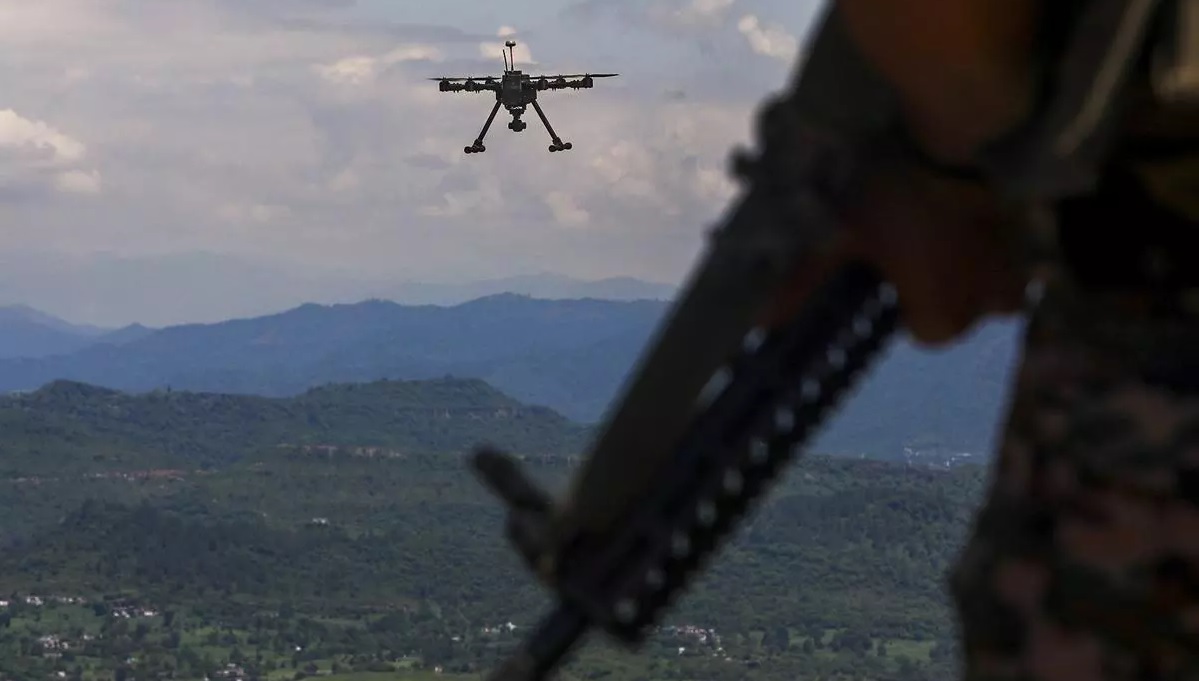 India's Defence Ministry Warns Against Chinese Parts in Military Drones Amid Security Concerns
India's Defence Ministry Warns Against Chinese Parts in Military Drones Amid Security Concerns
-
 China’s Super Radar Detects Mysterious Plasma Bubble Over Giza Pyramids
China’s Super Radar Detects Mysterious Plasma Bubble Over Giza Pyramids
-
 India's Indigenous Kaveri Engine Program with New Focus on Thrust and Performance
India's Indigenous Kaveri Engine Program with New Focus on Thrust and Performance
-
 Isro Draws up Ambitious Plan for 2024, says will Launch at Least 12 Missions
Isro Draws up Ambitious Plan for 2024, says will Launch at Least 12 Missions
-
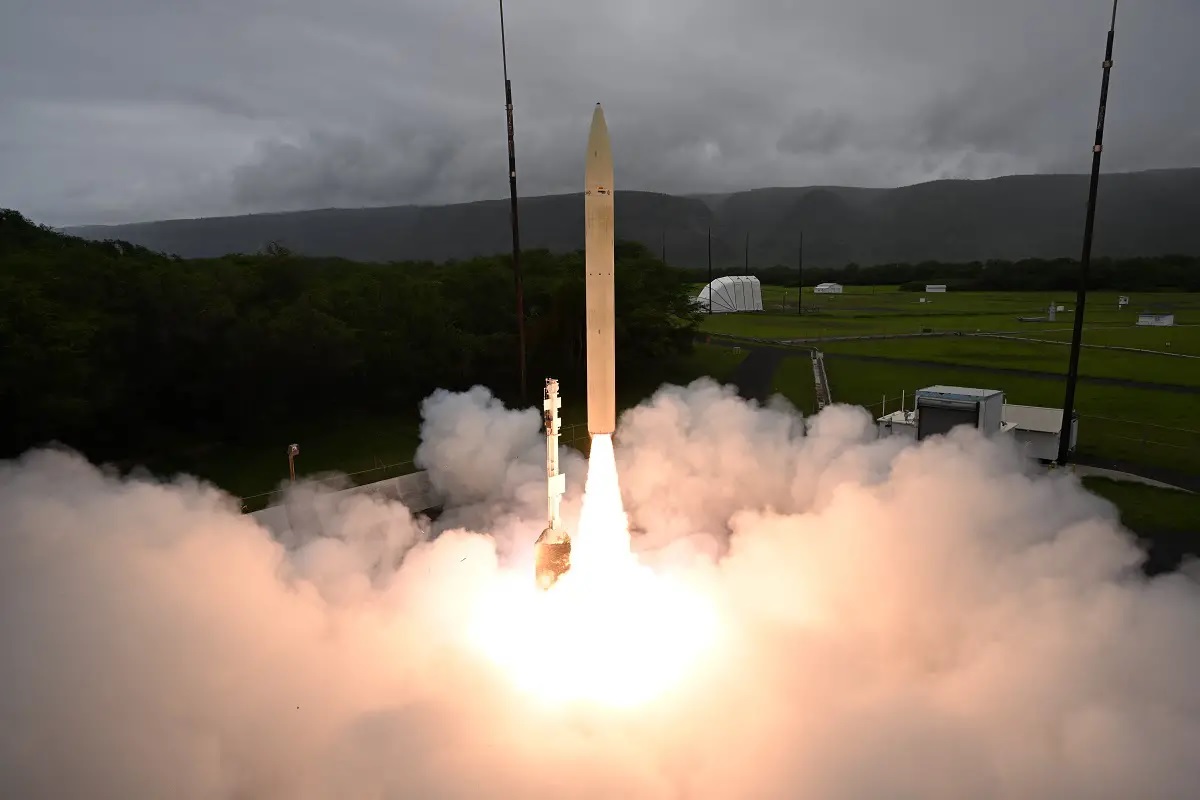 Successful Hypersonic Missile Test by U.S. Department of Defense
Successful Hypersonic Missile Test by U.S. Department of Defense
Top Trending in 4 Days
-
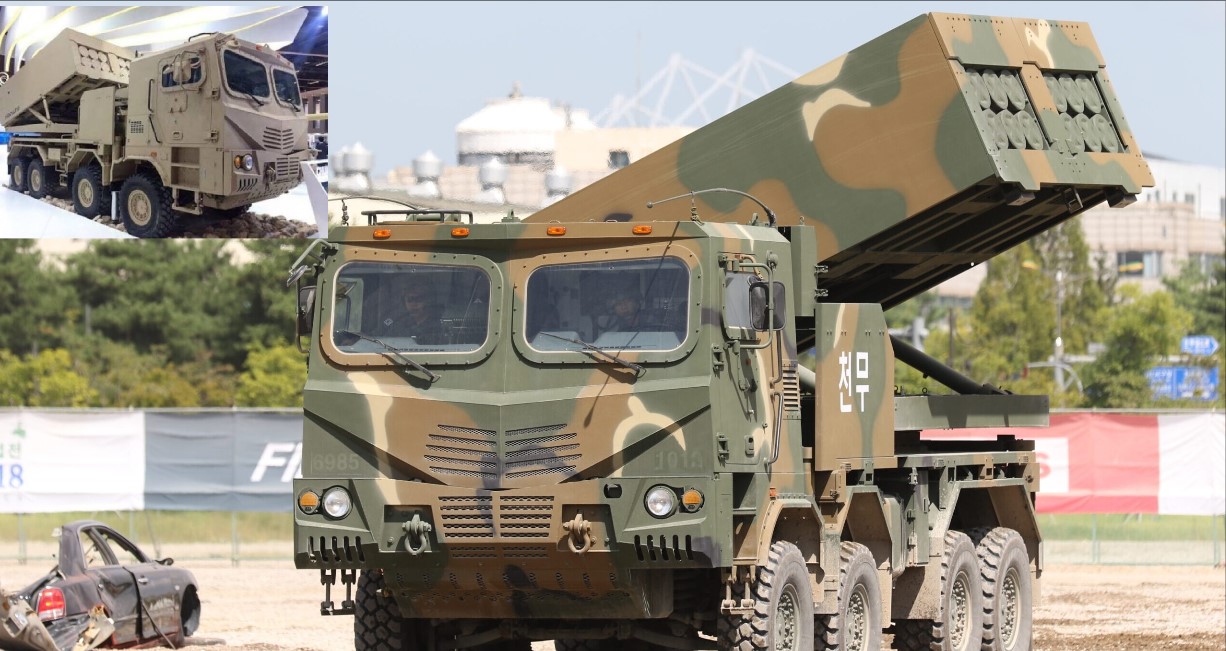 South Korea’s K239 Chunmoo Rocket Artillery Spotted in Saudi Arabia
South Korea’s K239 Chunmoo Rocket Artillery Spotted in Saudi Arabia
-
 Russia Fires Intercontinental Ballistic Missile at Ukraine
Russia Fires Intercontinental Ballistic Missile at Ukraine
-
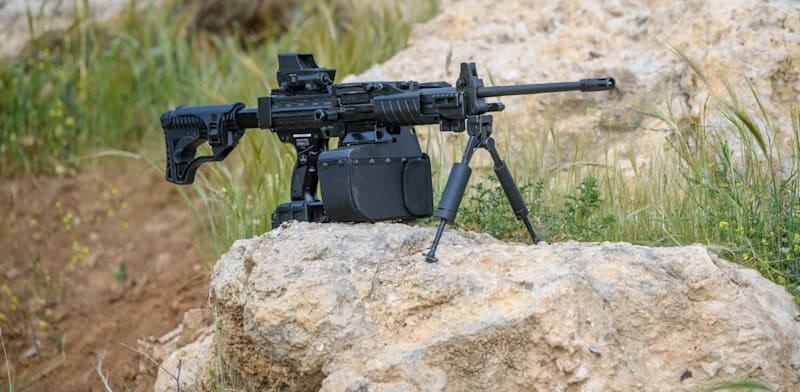 India-Israel AI-Enhanced Weaponry Makes Combat Debut in Gaza
India-Israel AI-Enhanced Weaponry Makes Combat Debut in Gaza
-
 Advancing Space Tech for Defense: ICEYE Leads Finland's F-35 Industrial Participation Program
Advancing Space Tech for Defense: ICEYE Leads Finland's F-35 Industrial Participation Program
-
 Russia Reports Interception of 44 Ukrainian Drones Including 20 over Novgorod region
Russia Reports Interception of 44 Ukrainian Drones Including 20 over Novgorod region
-
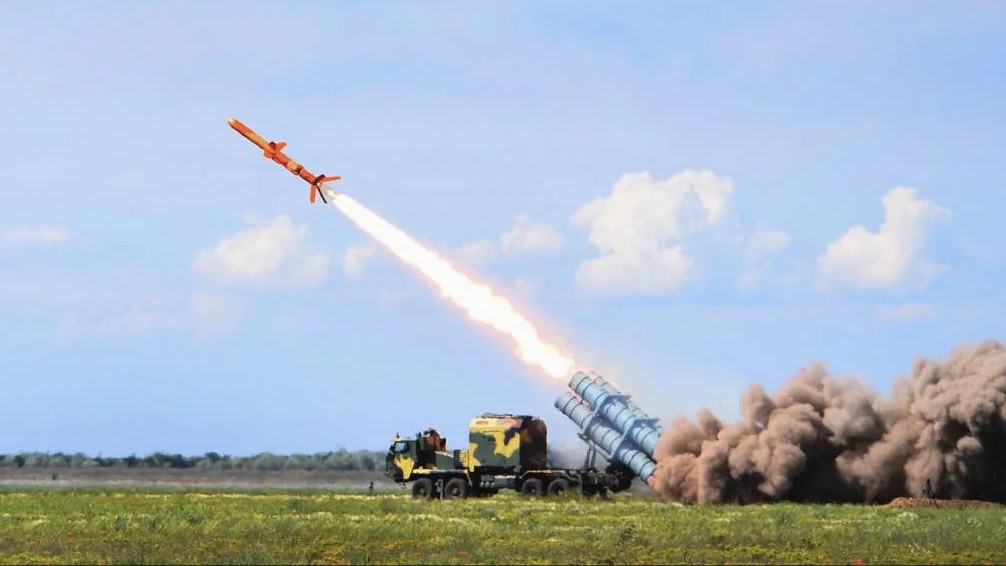 Ukraine Scales Up Neptune Missile Production: Over 100 Units Manufactured with Enhanced Range
Ukraine Scales Up Neptune Missile Production: Over 100 Units Manufactured with Enhanced Range
-
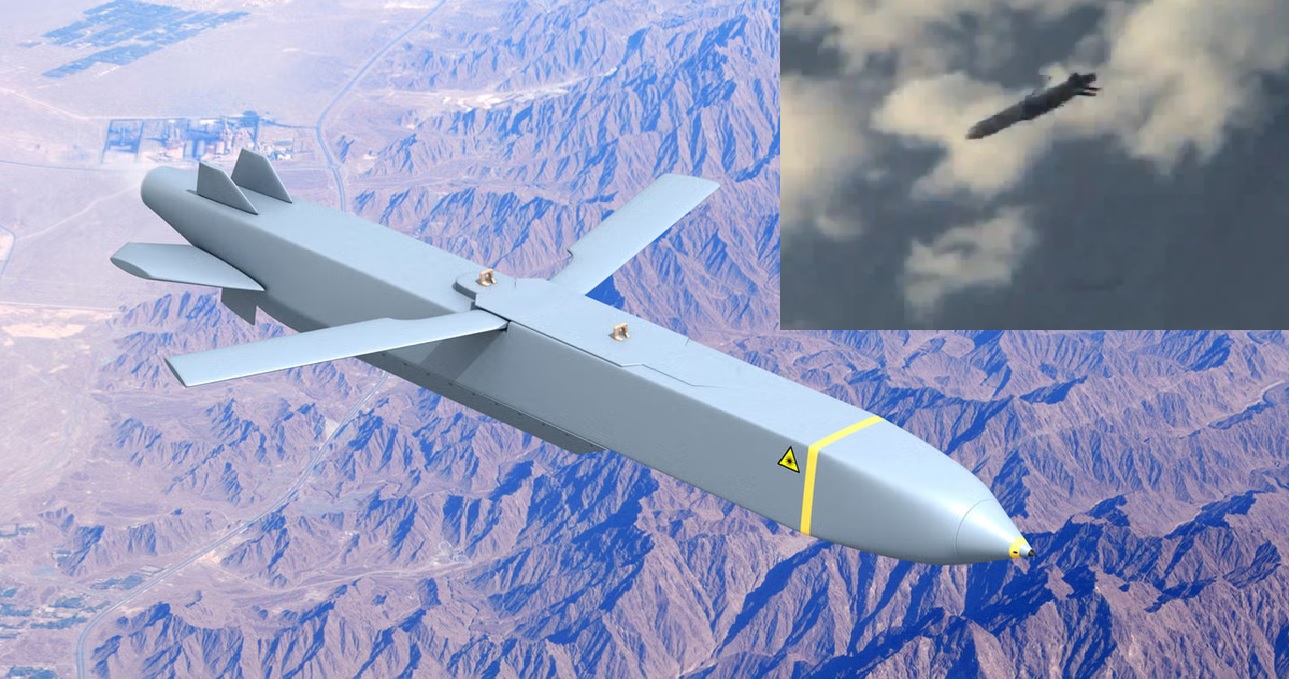 Ukraine’s Launched UK Storm Shadow Missiles to Strick Inside Russia
Ukraine’s Launched UK Storm Shadow Missiles to Strick Inside Russia
-
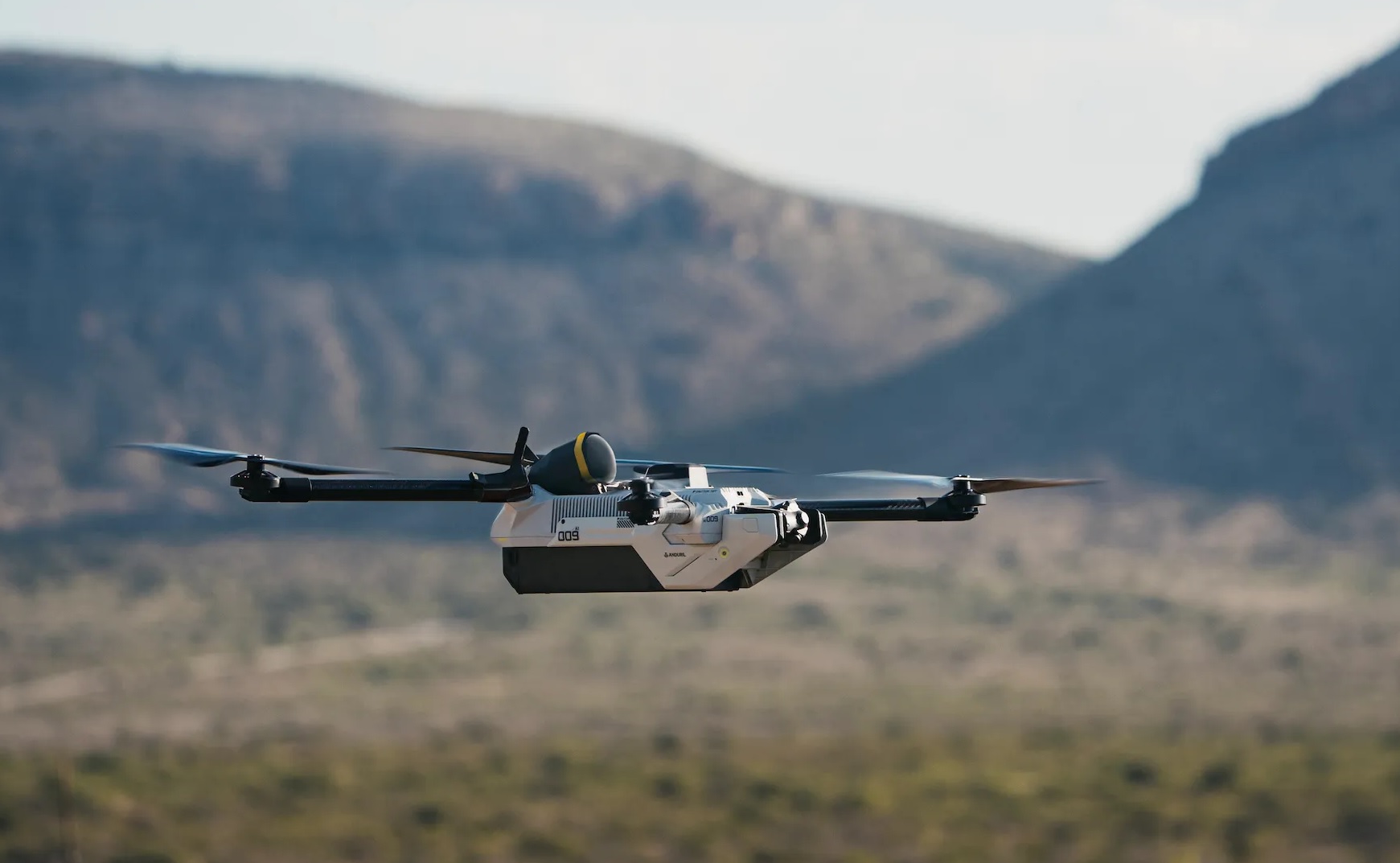 Anduril New Drone Countermeasures to Fortify U.S. Marines Against Aerial Threats
Anduril New Drone Countermeasures to Fortify U.S. Marines Against Aerial Threats

